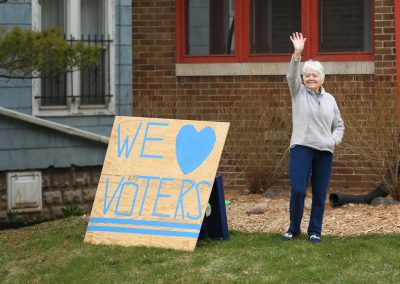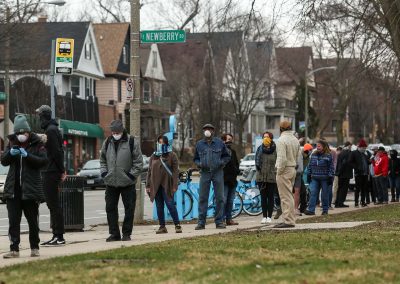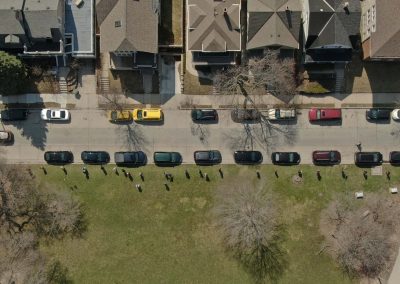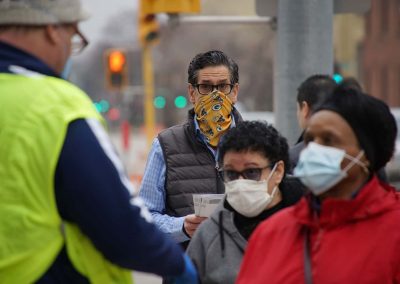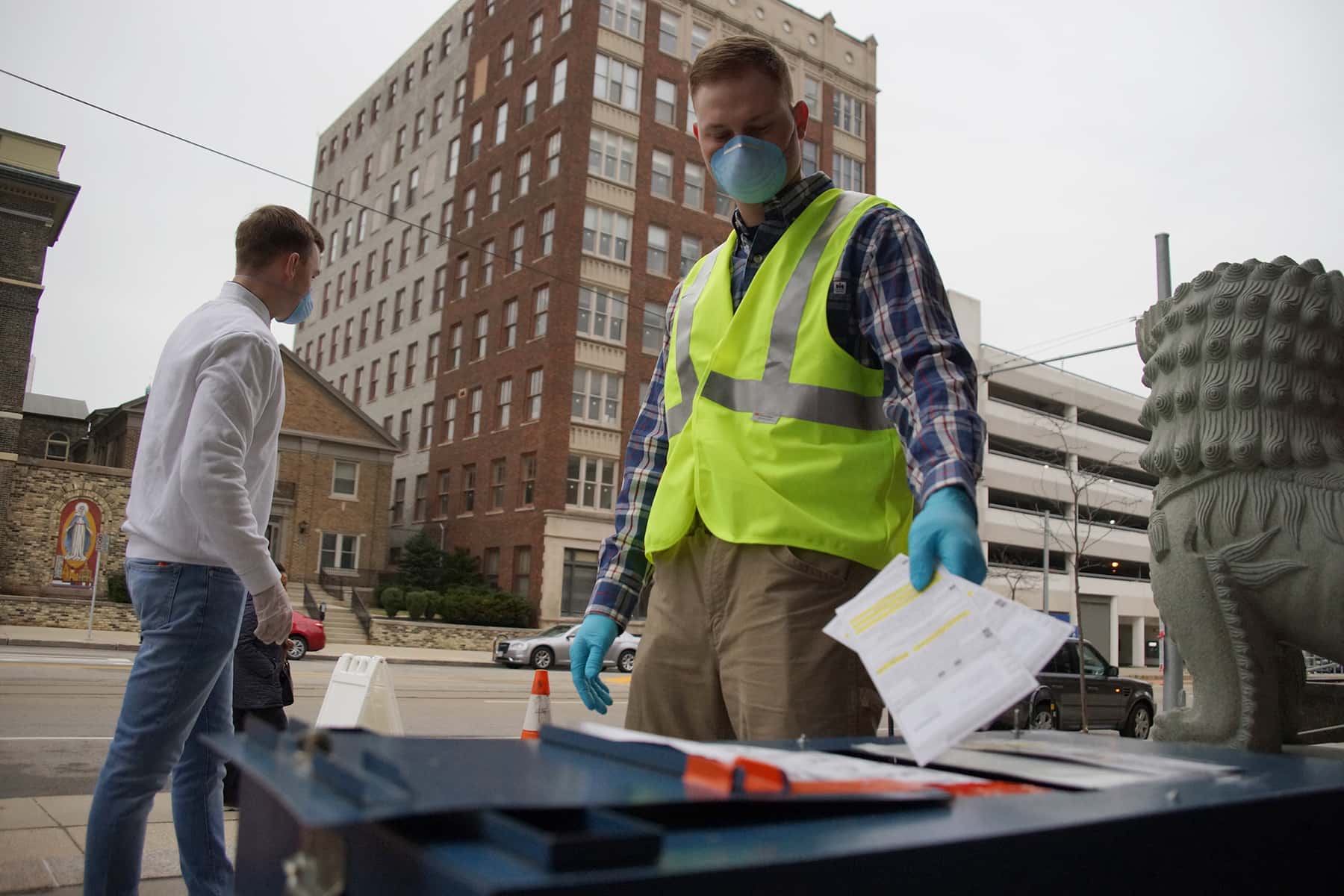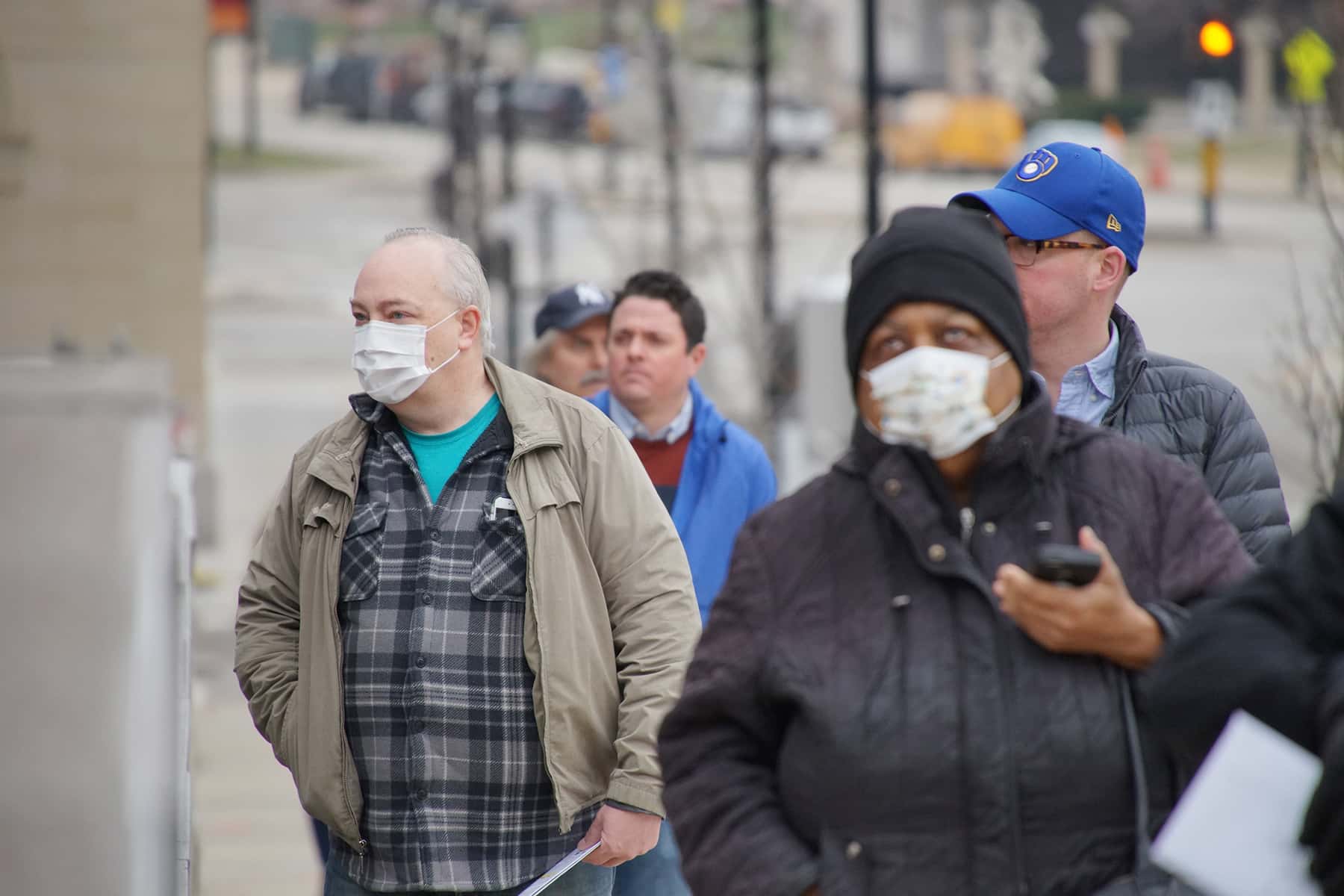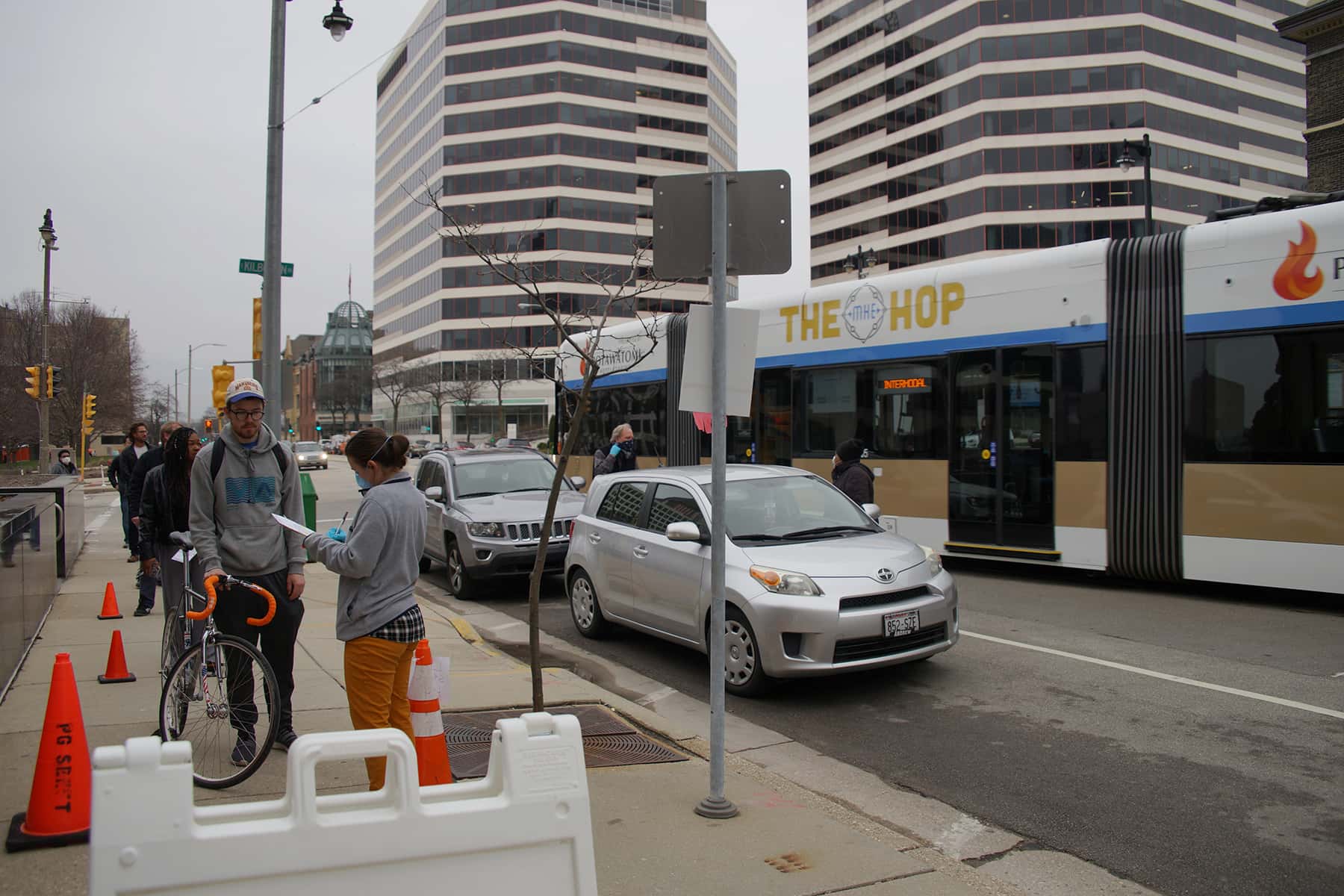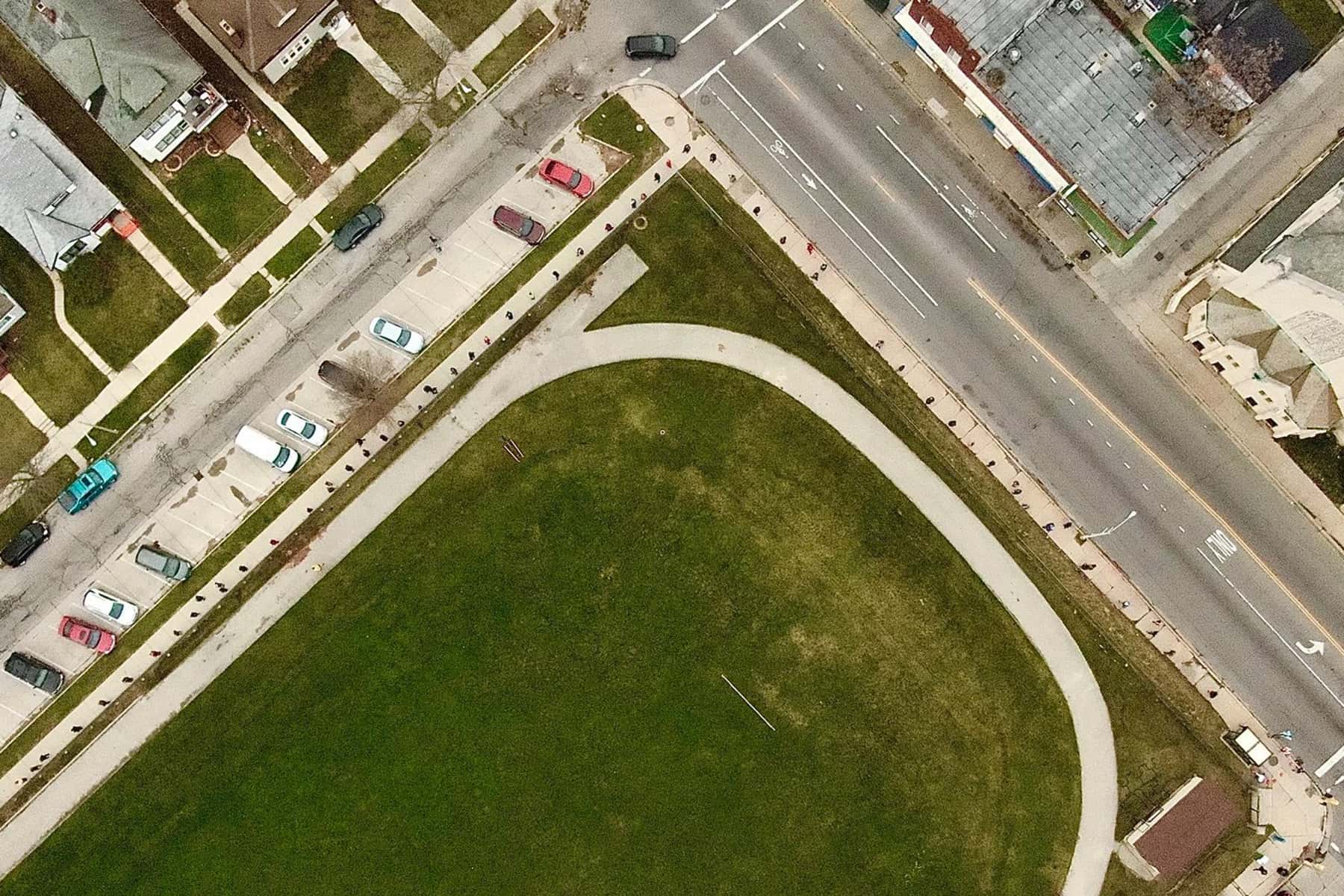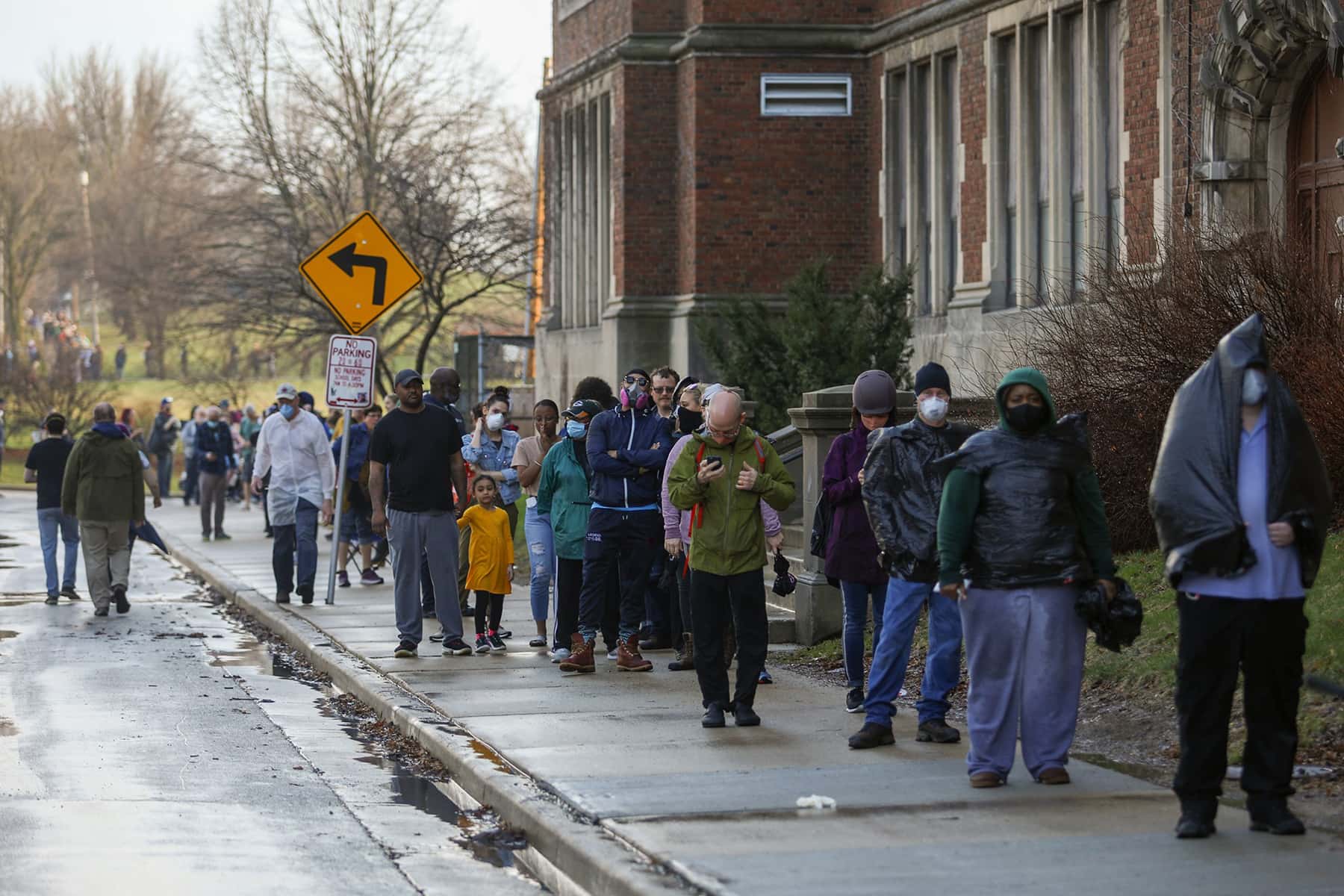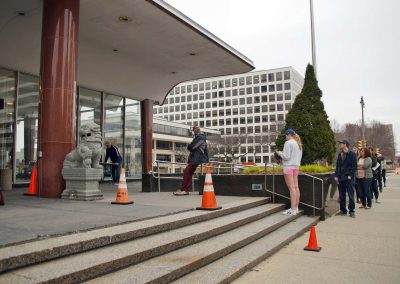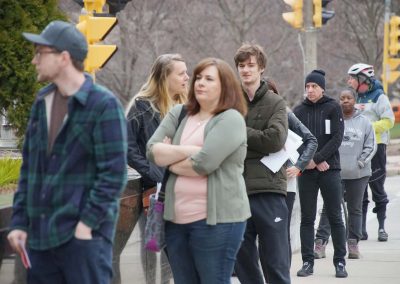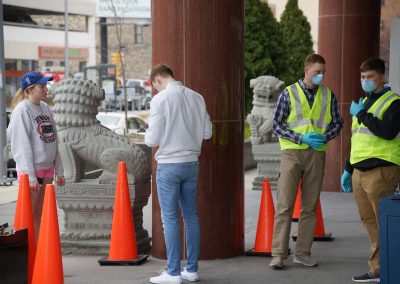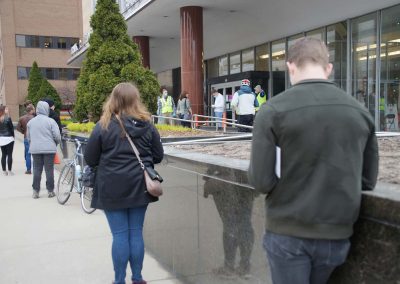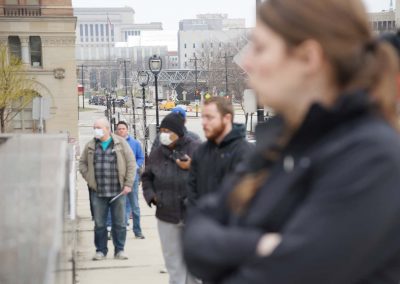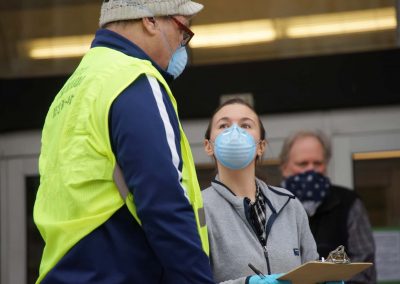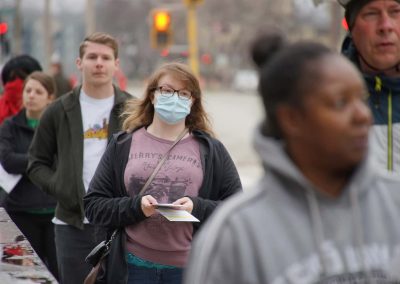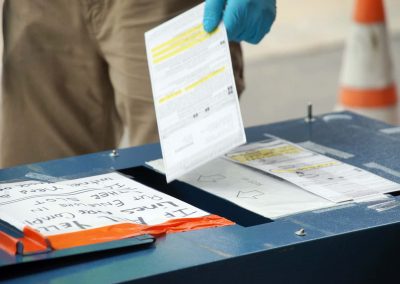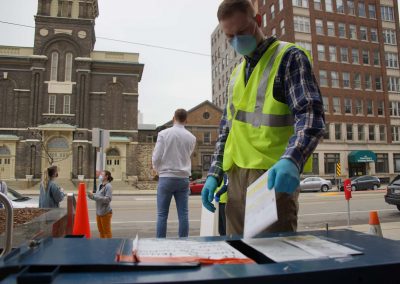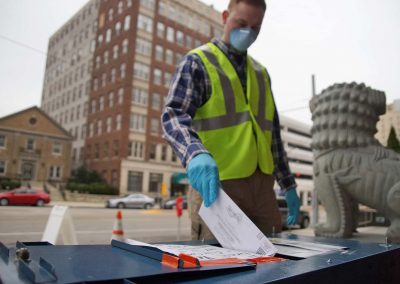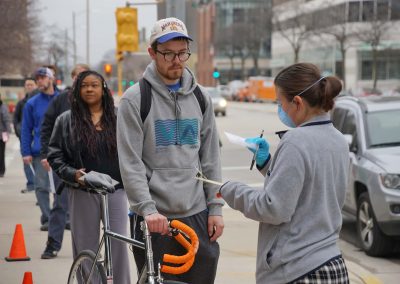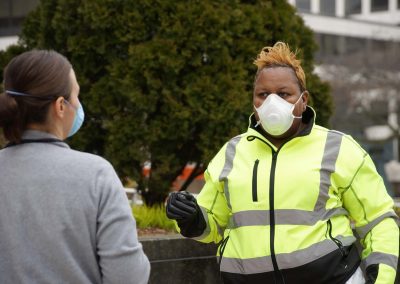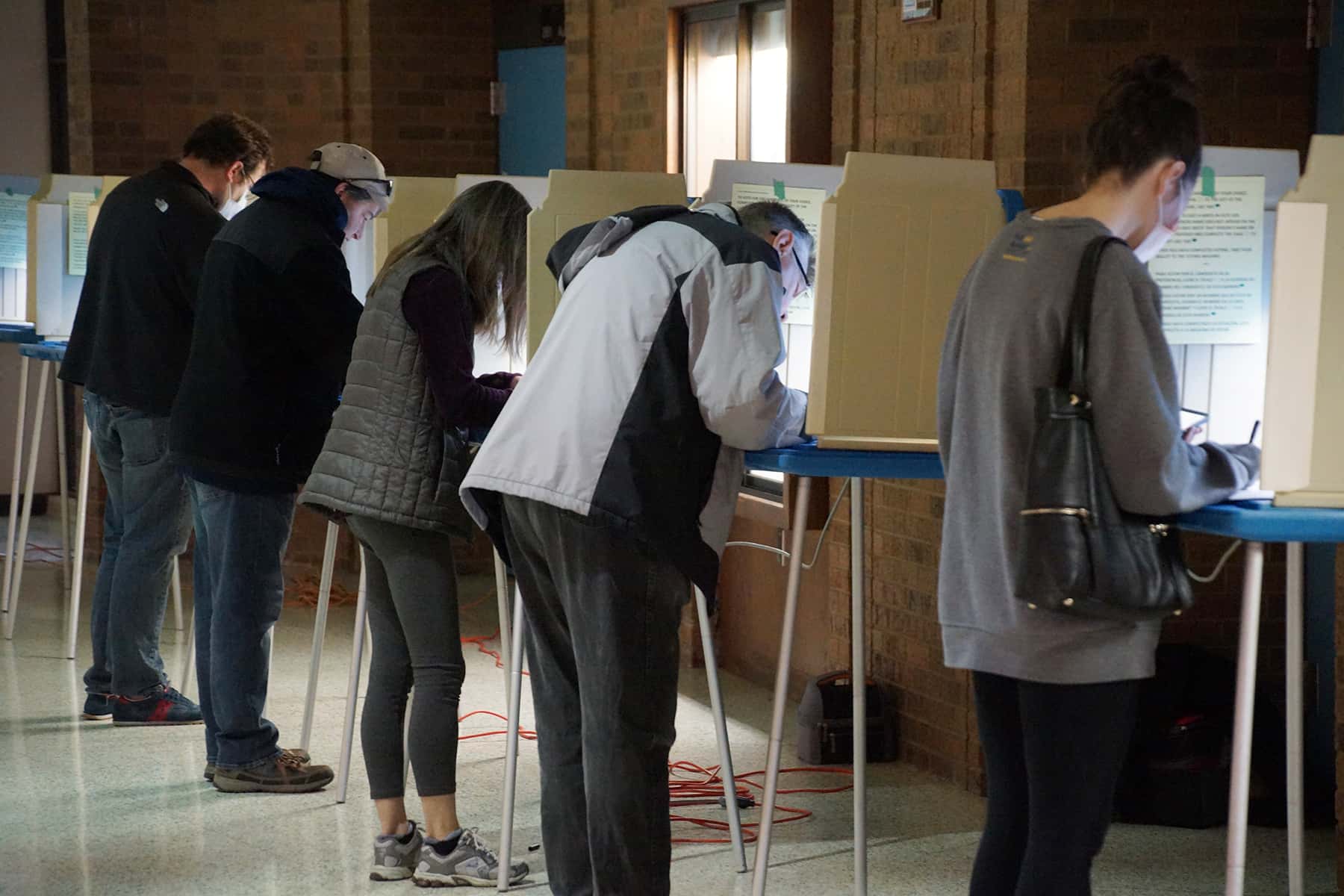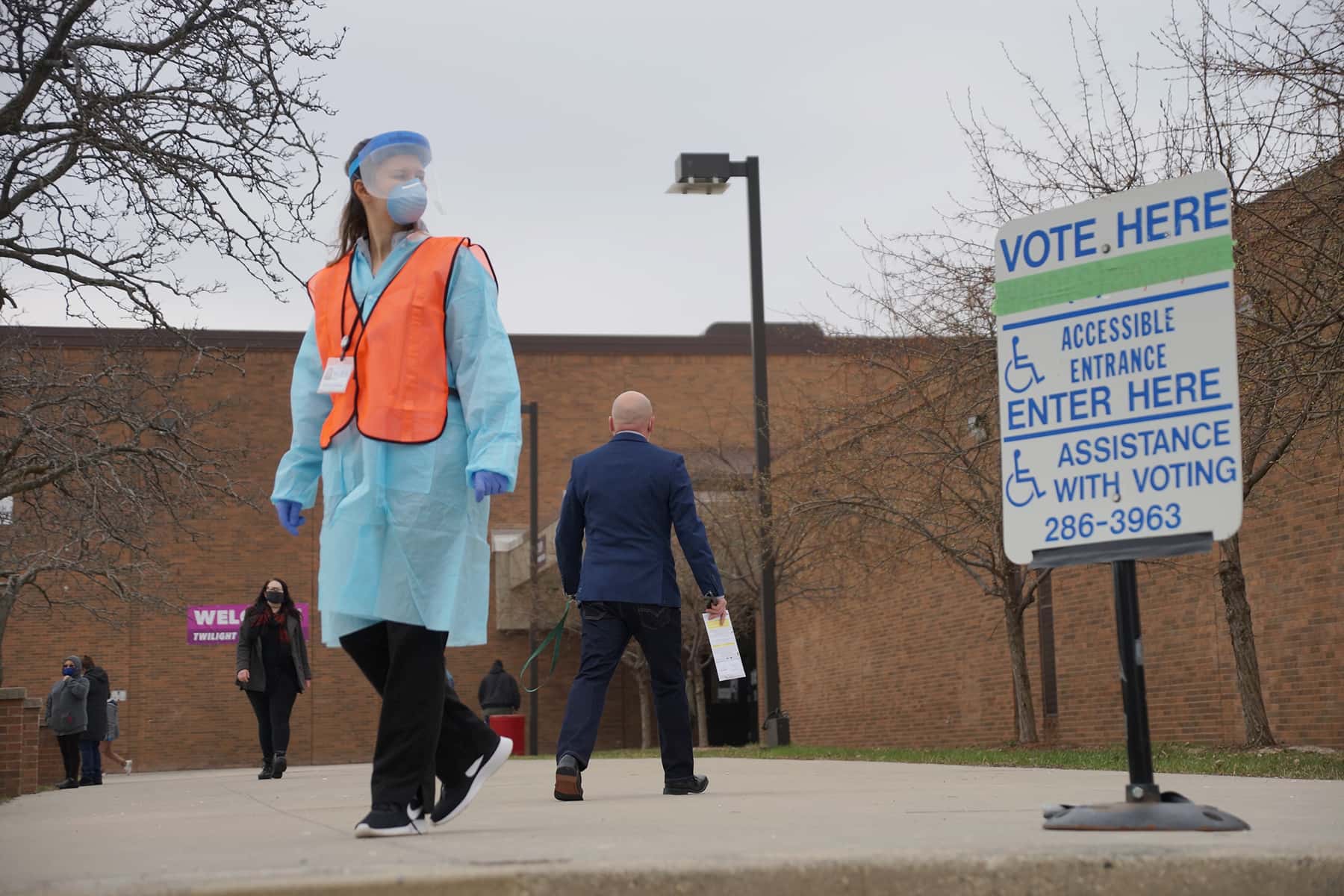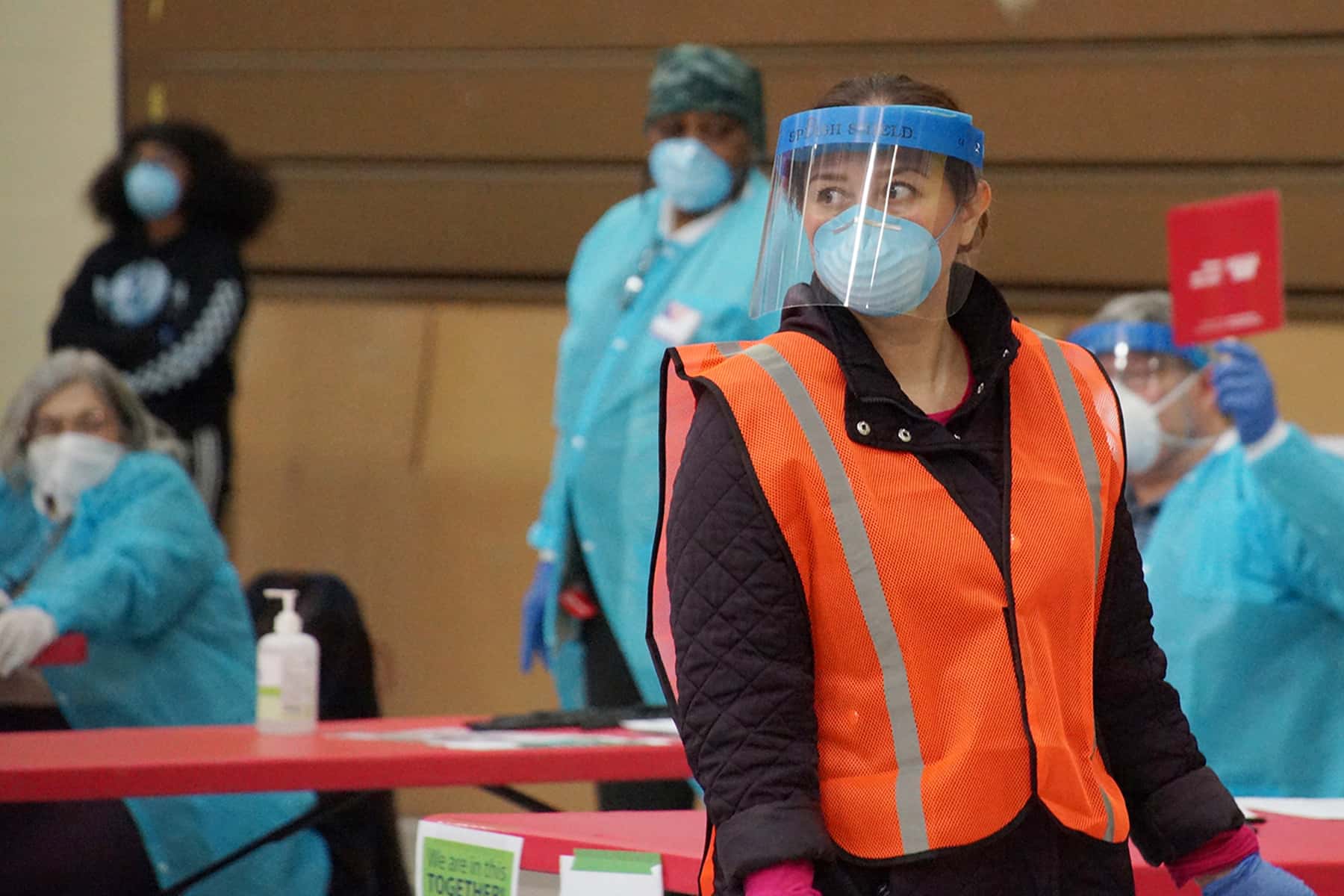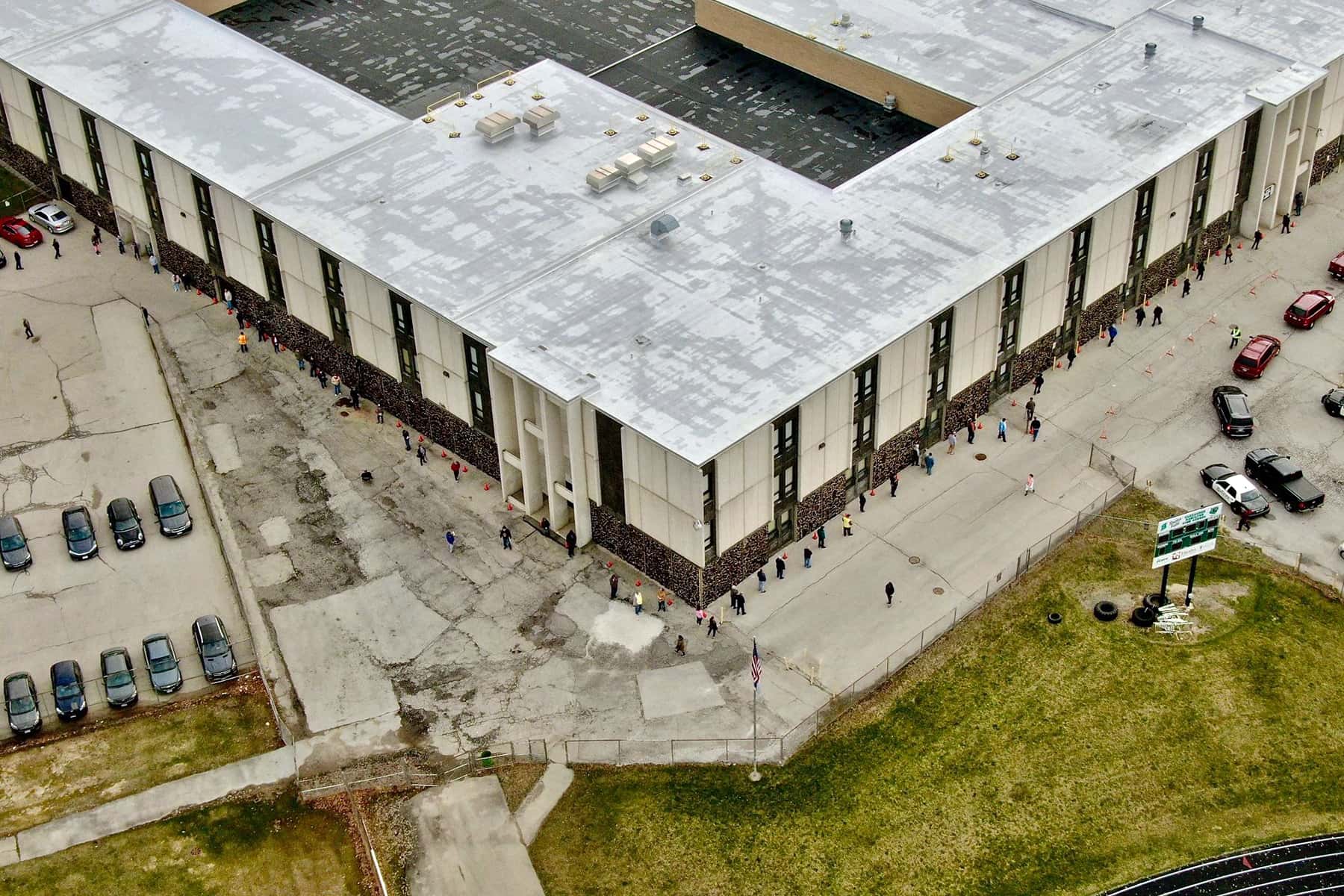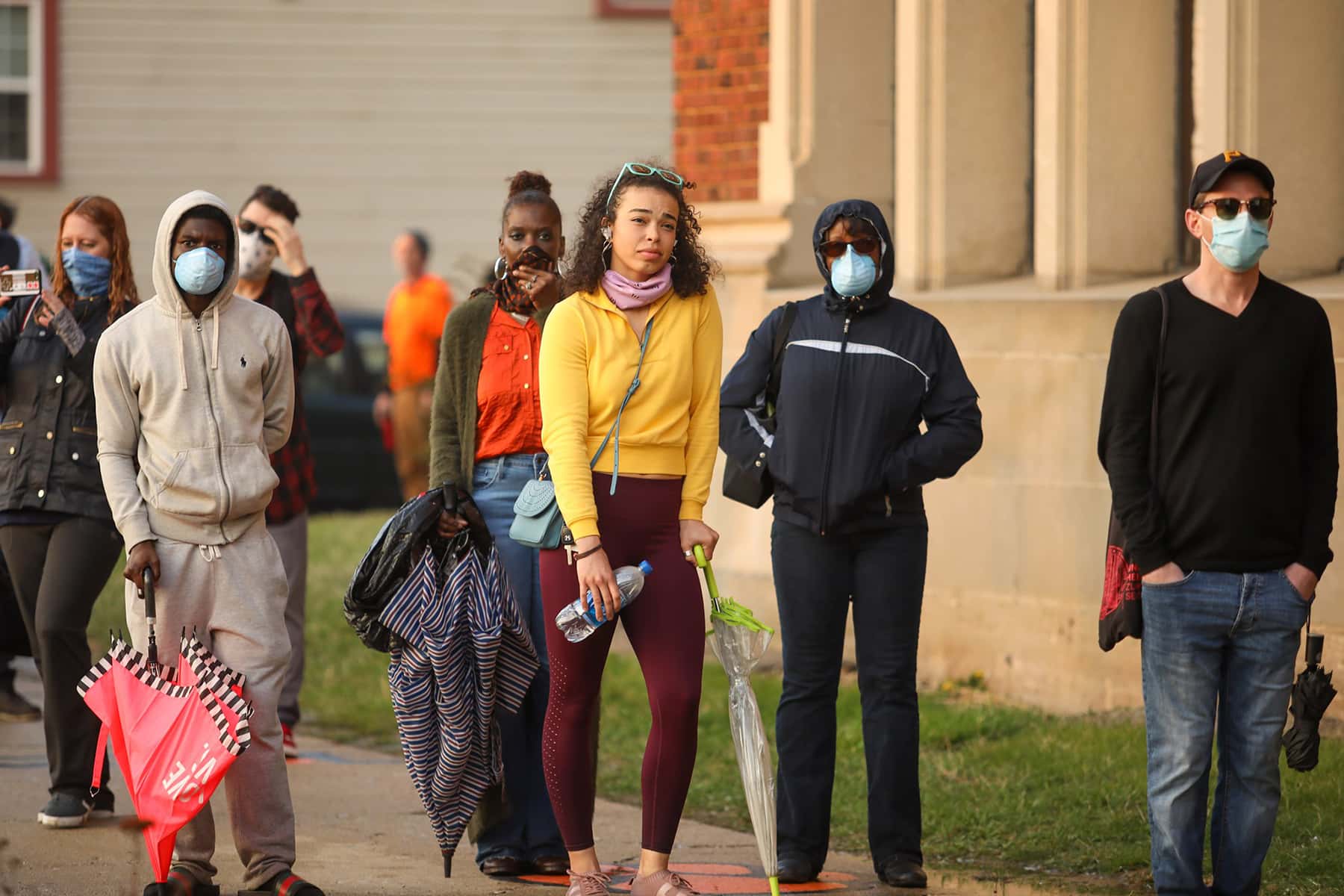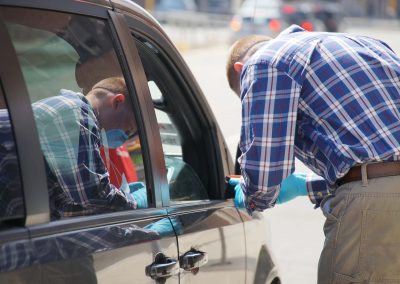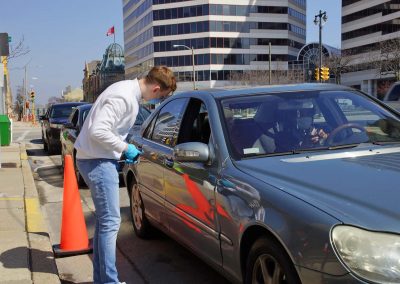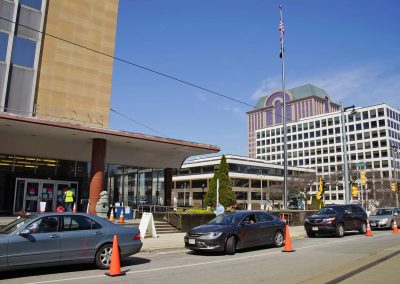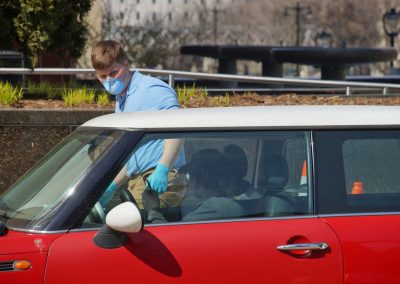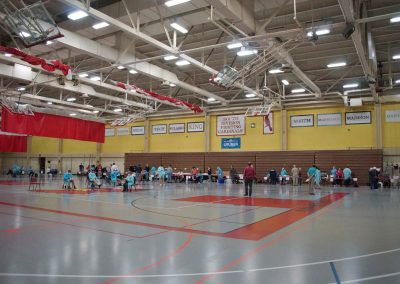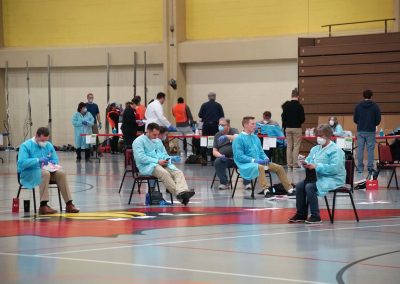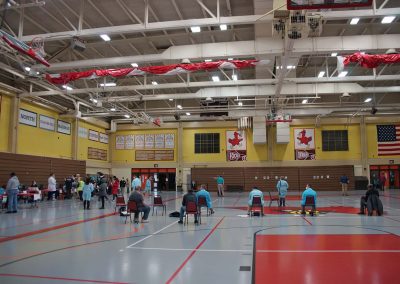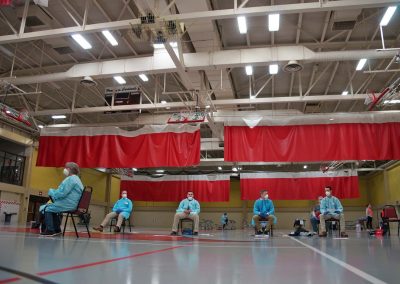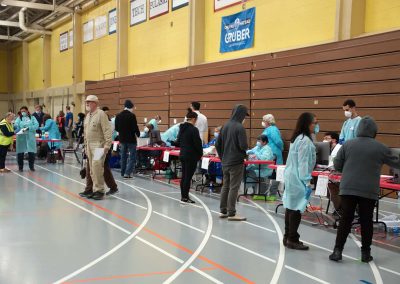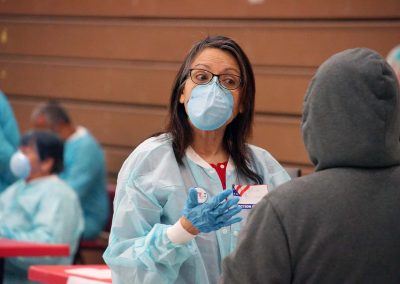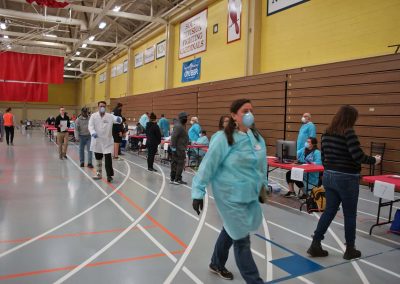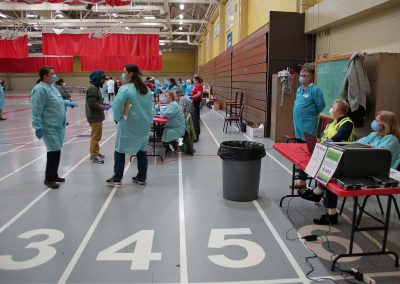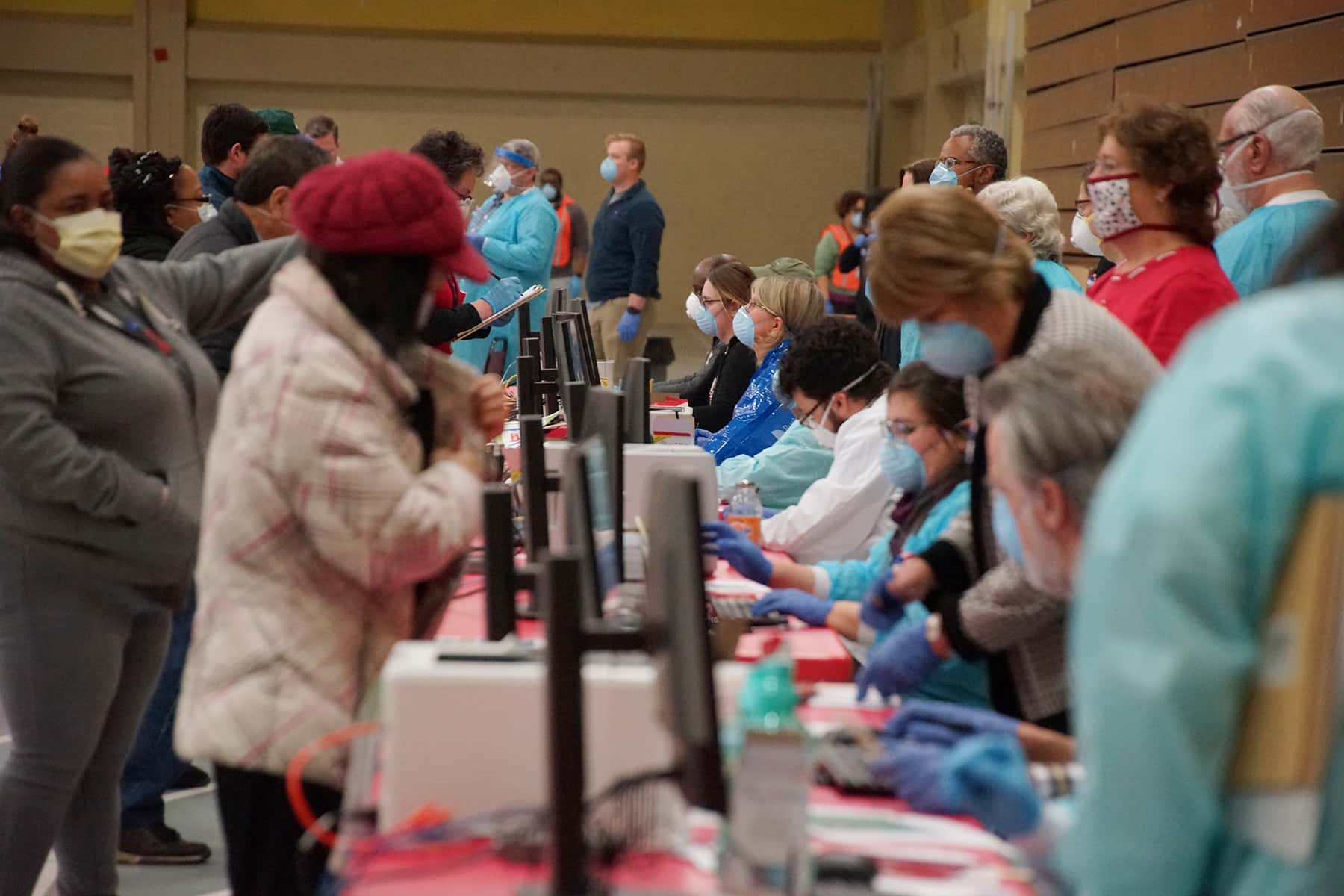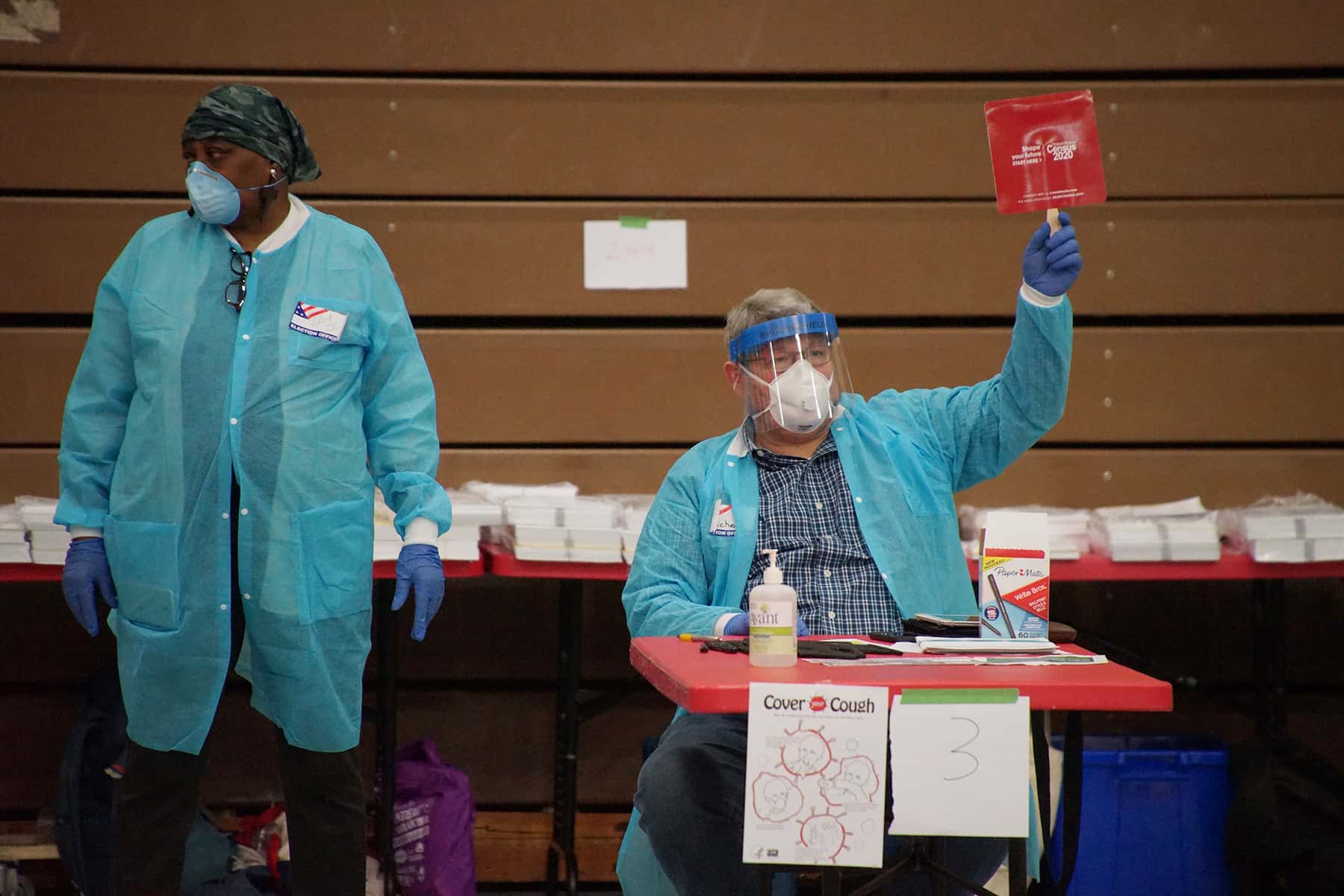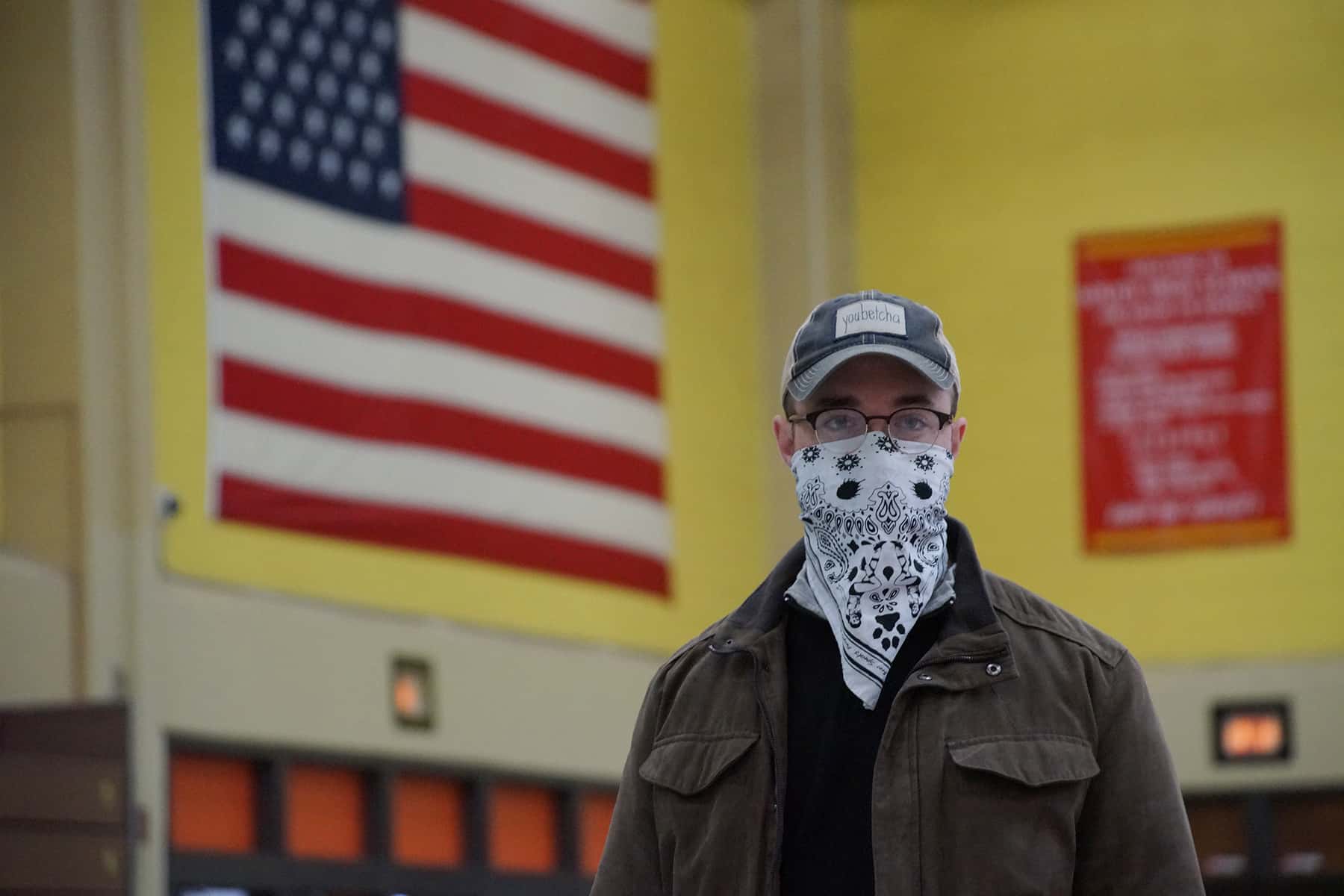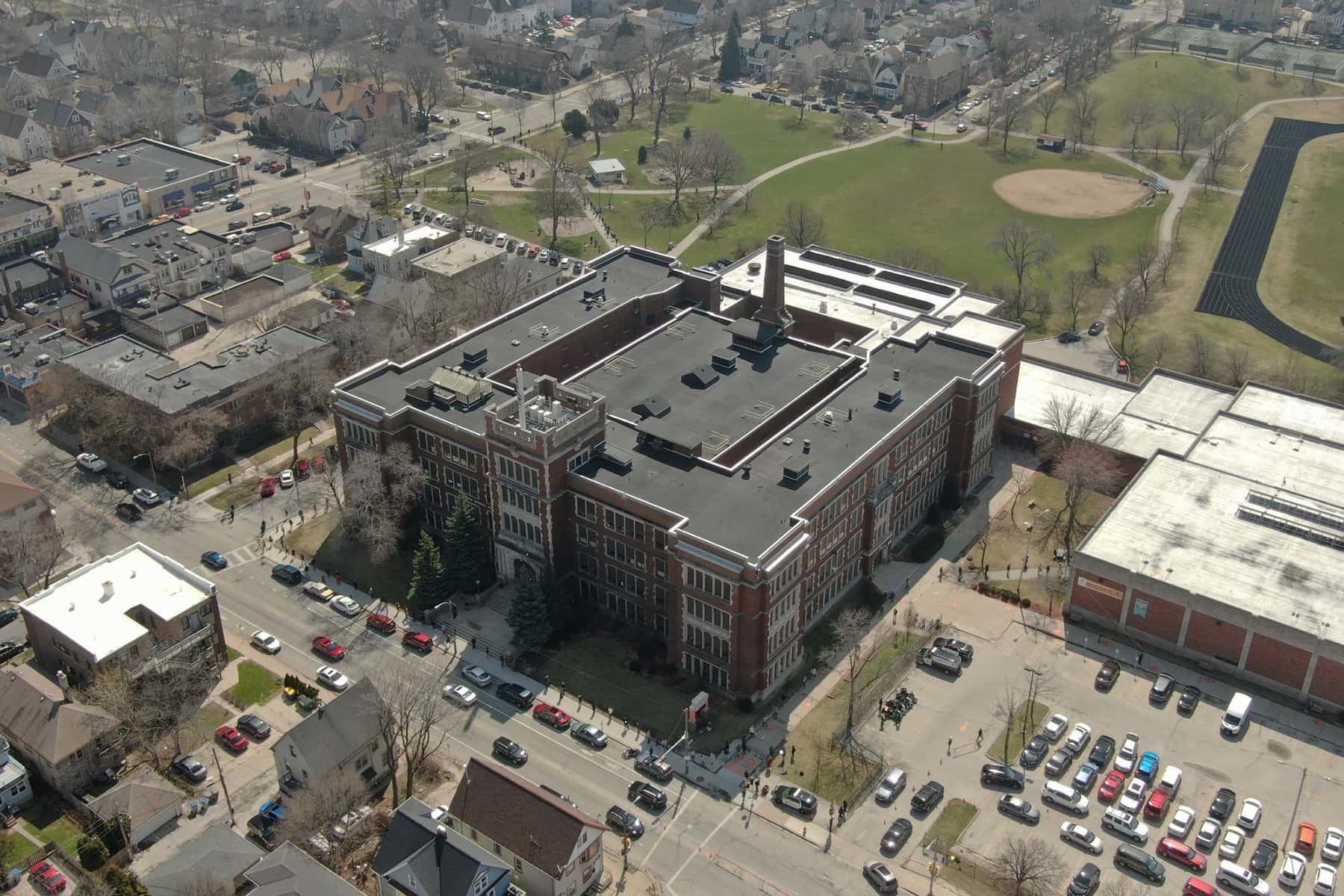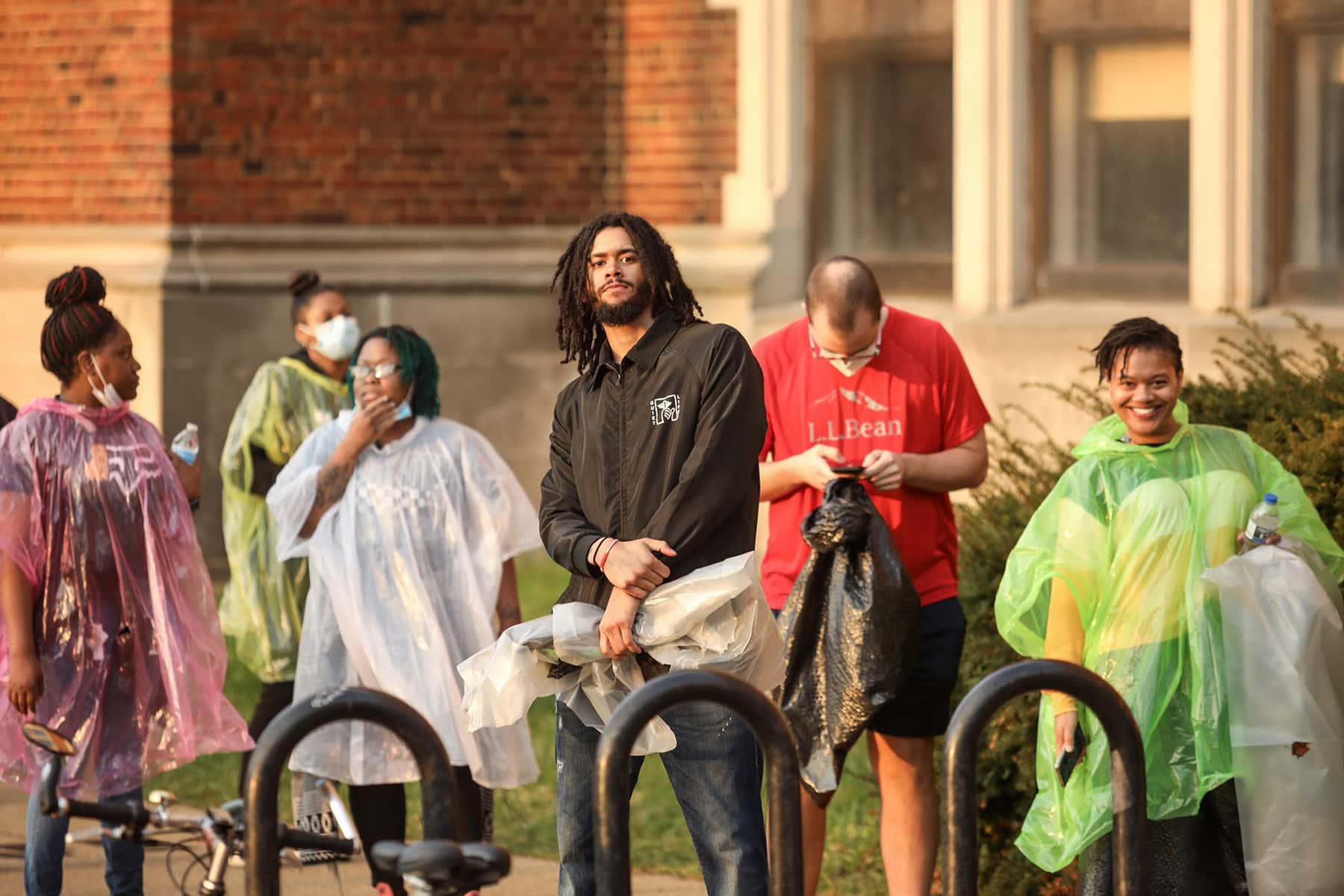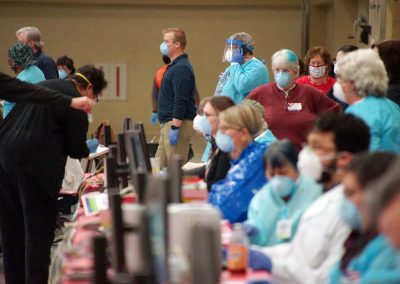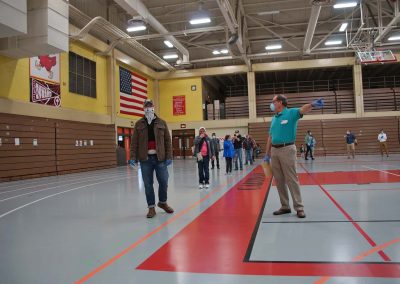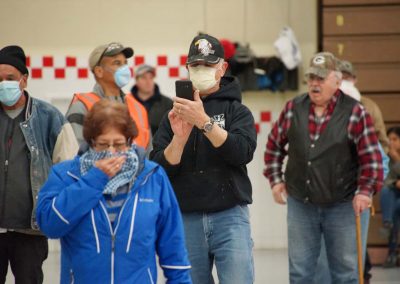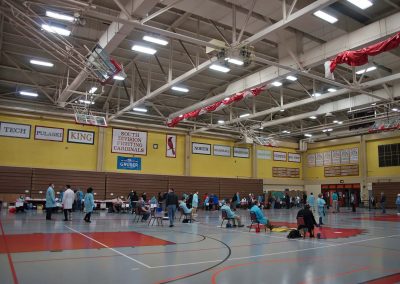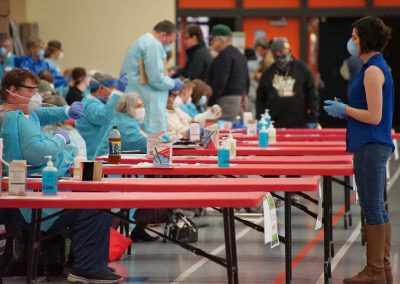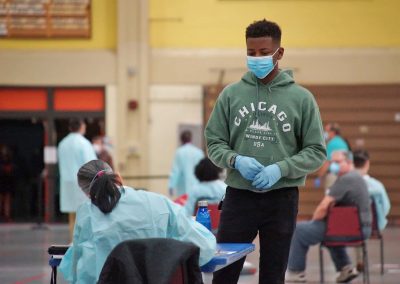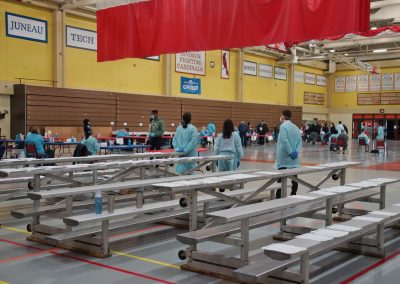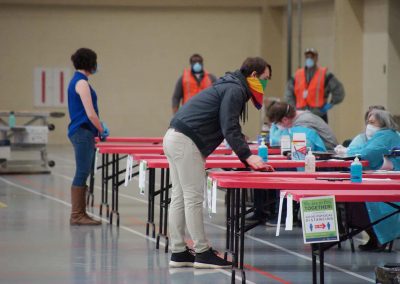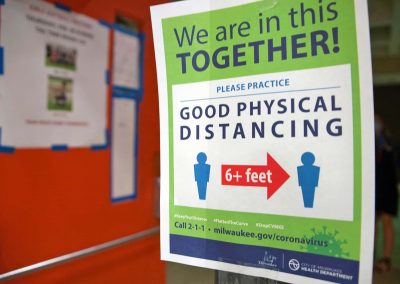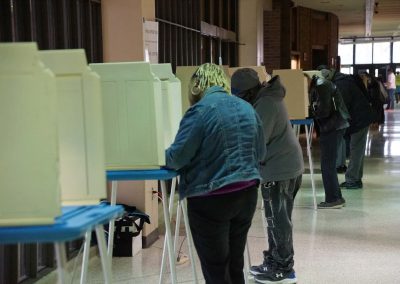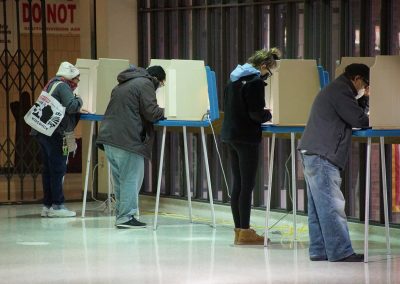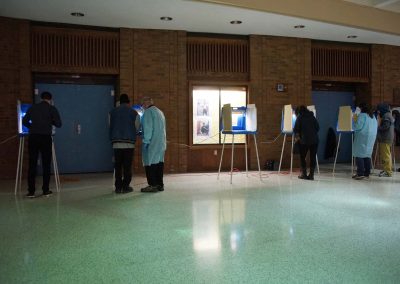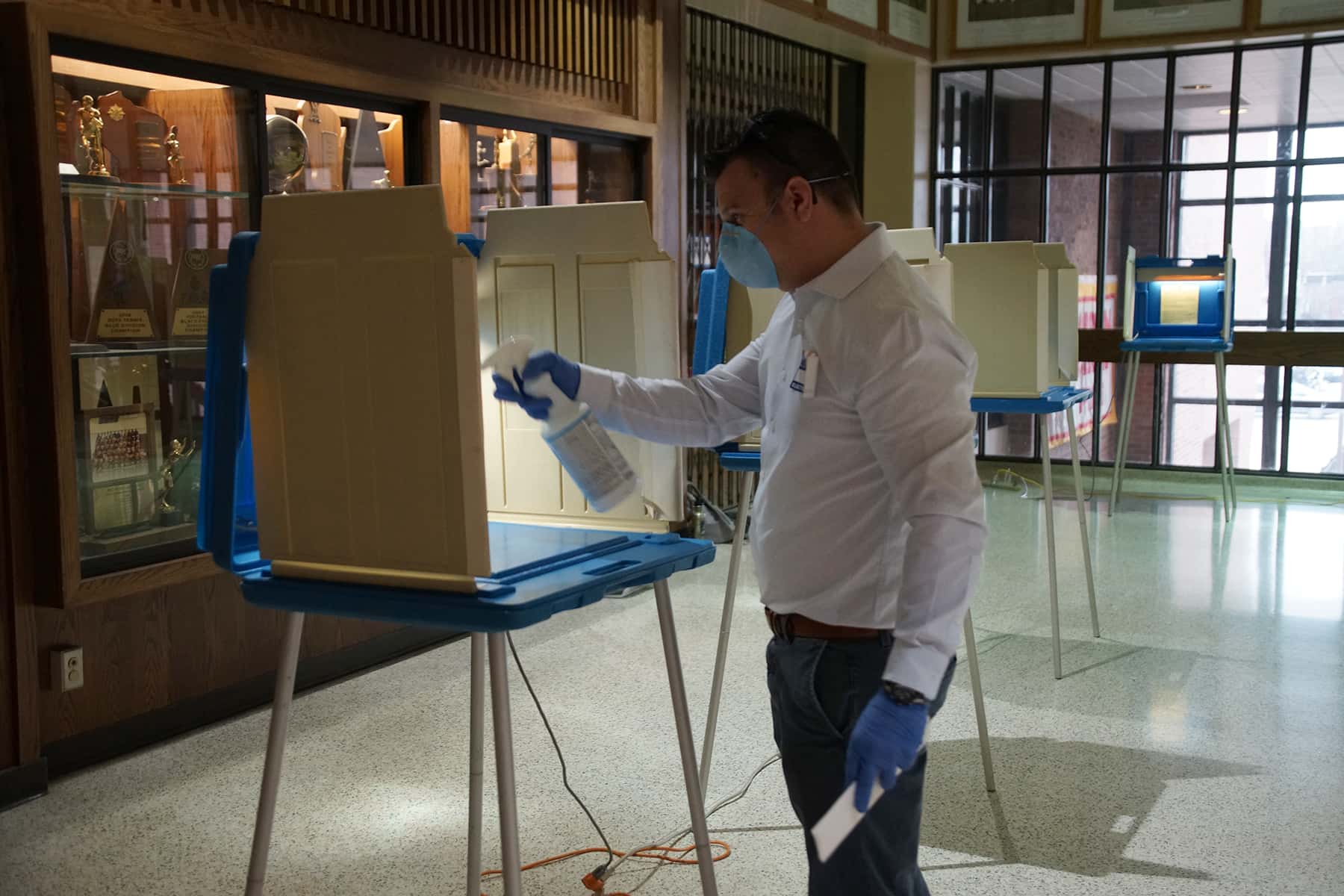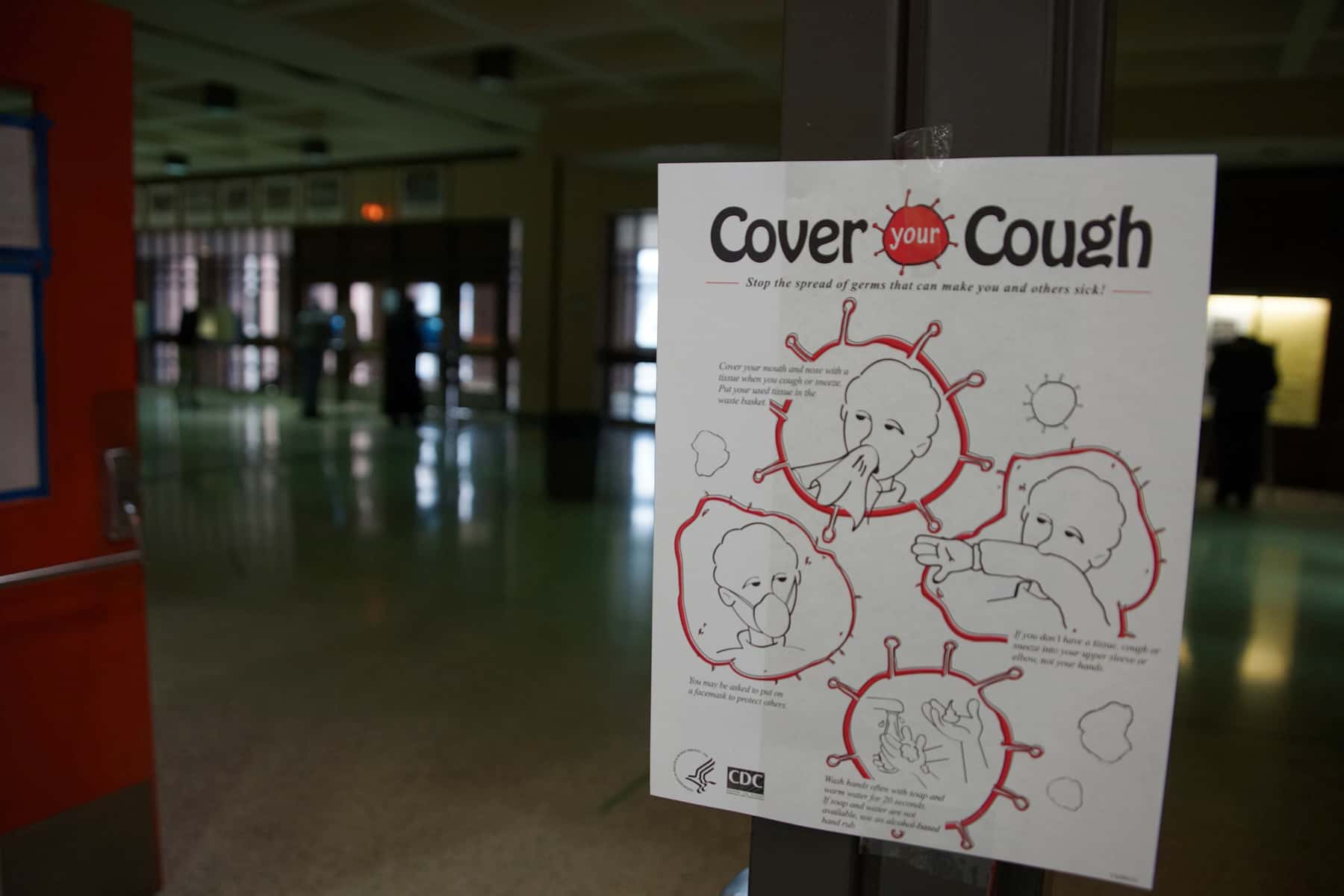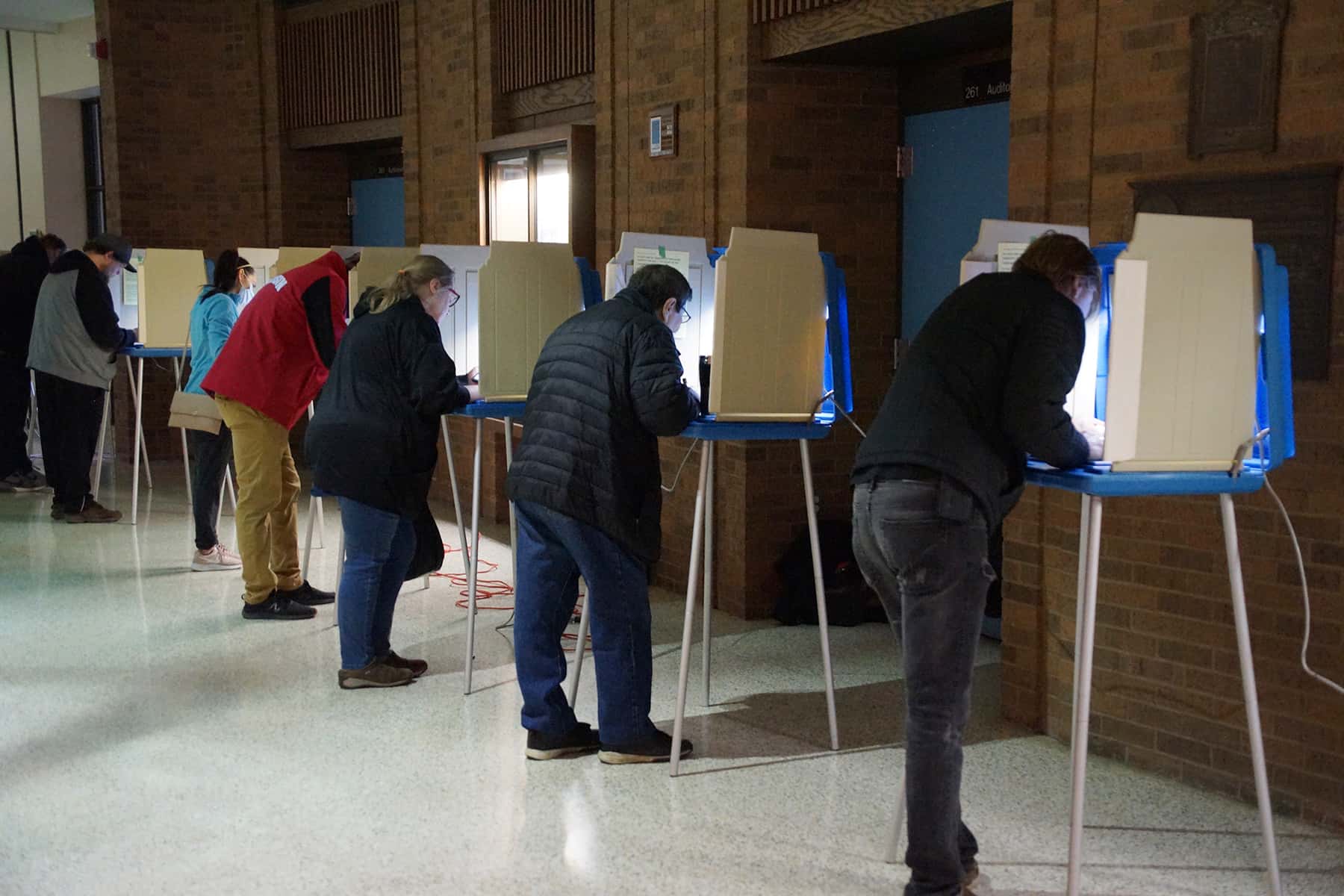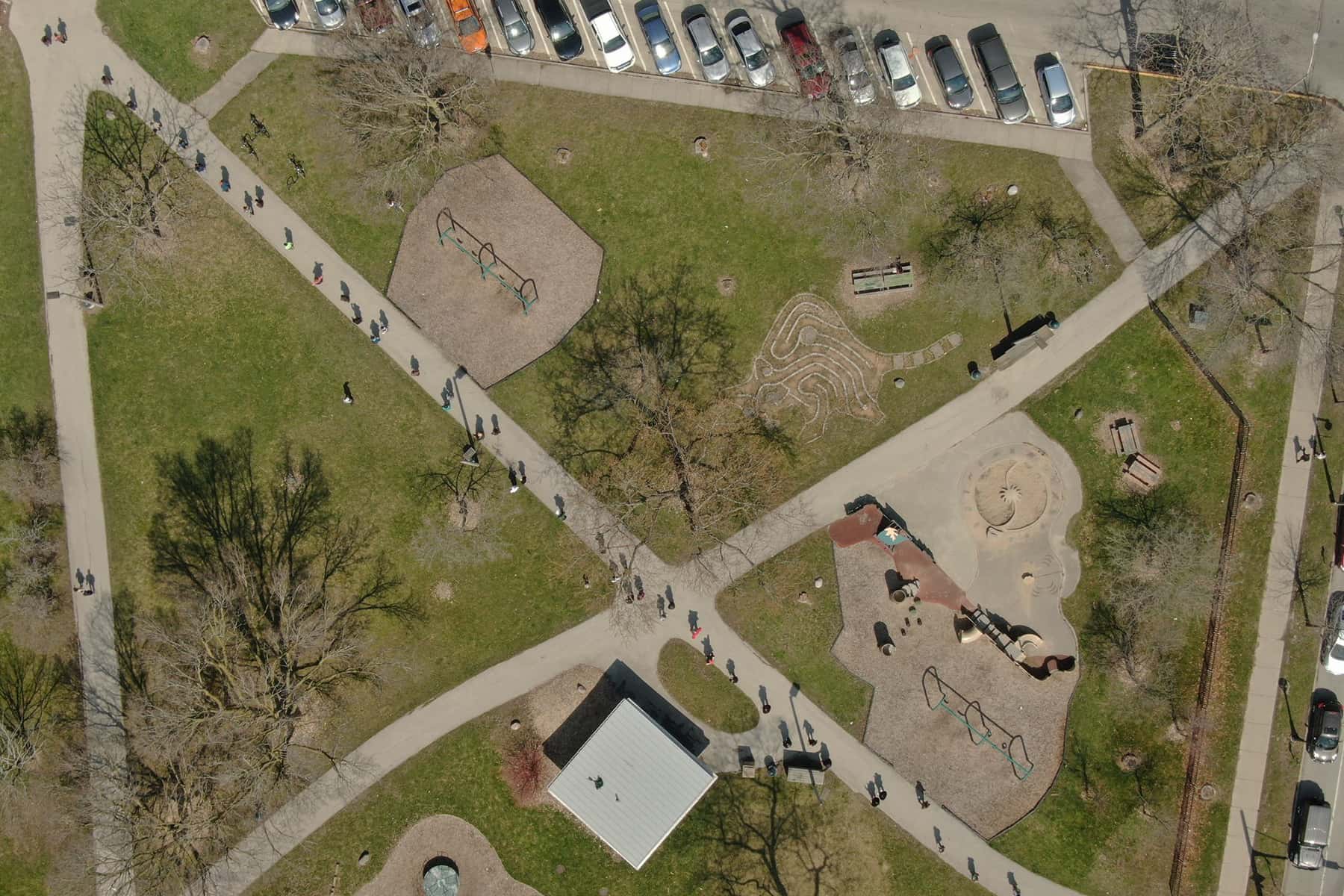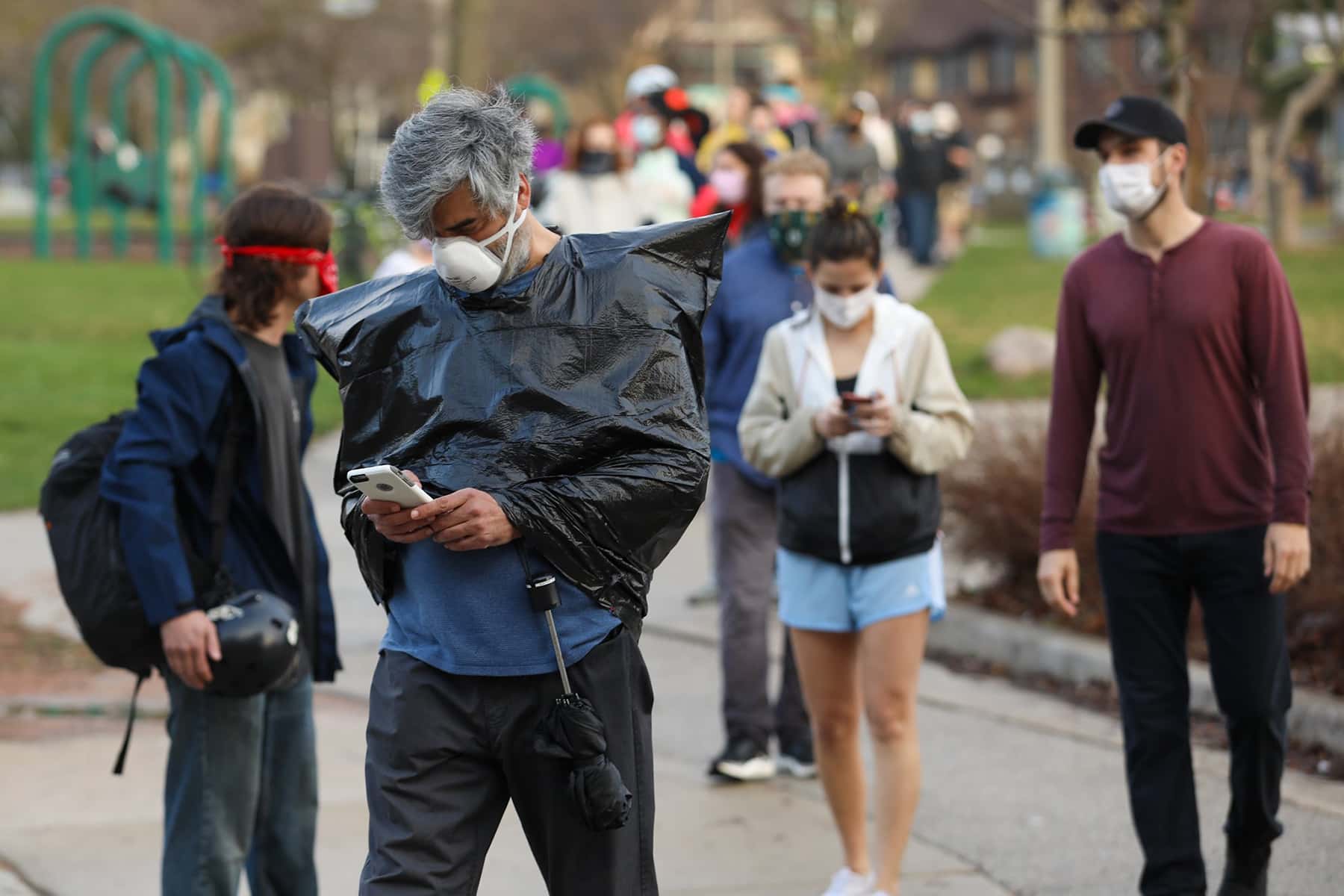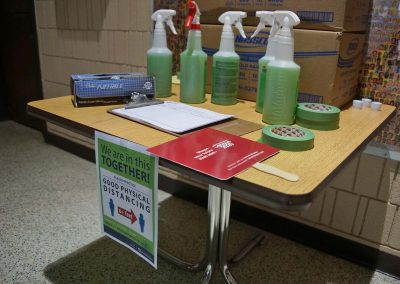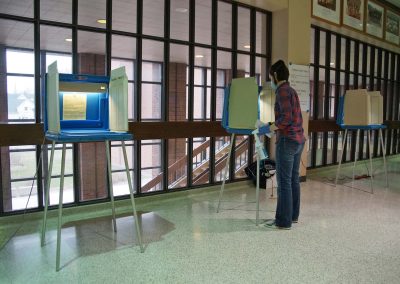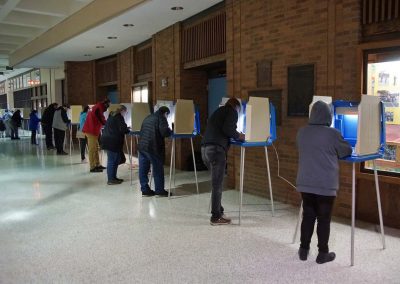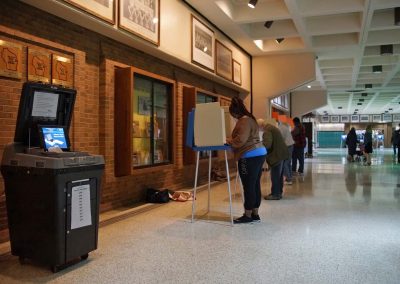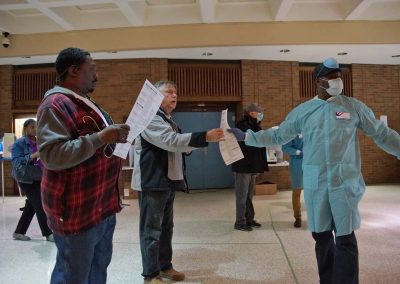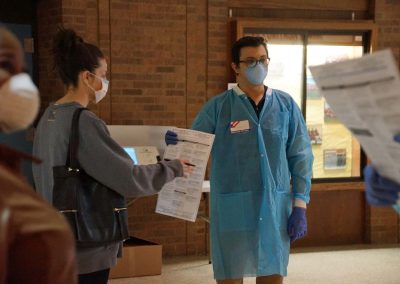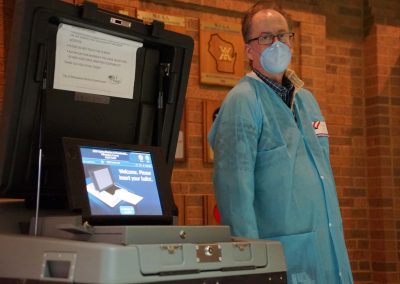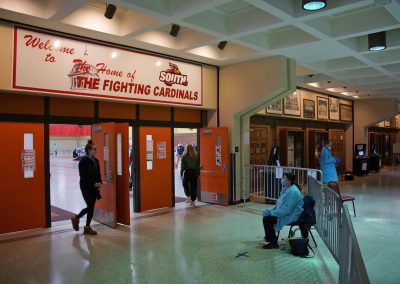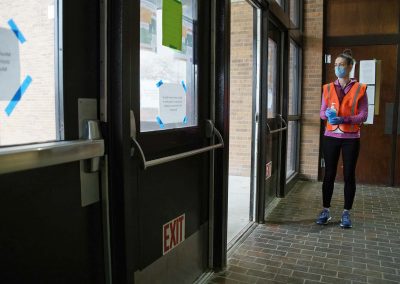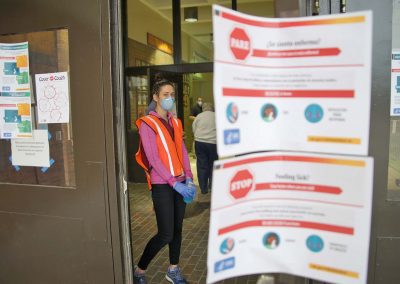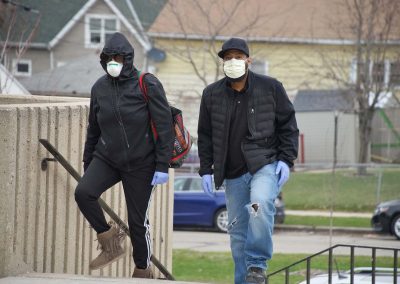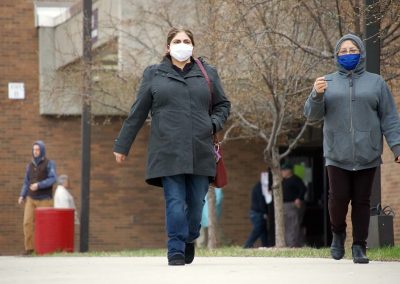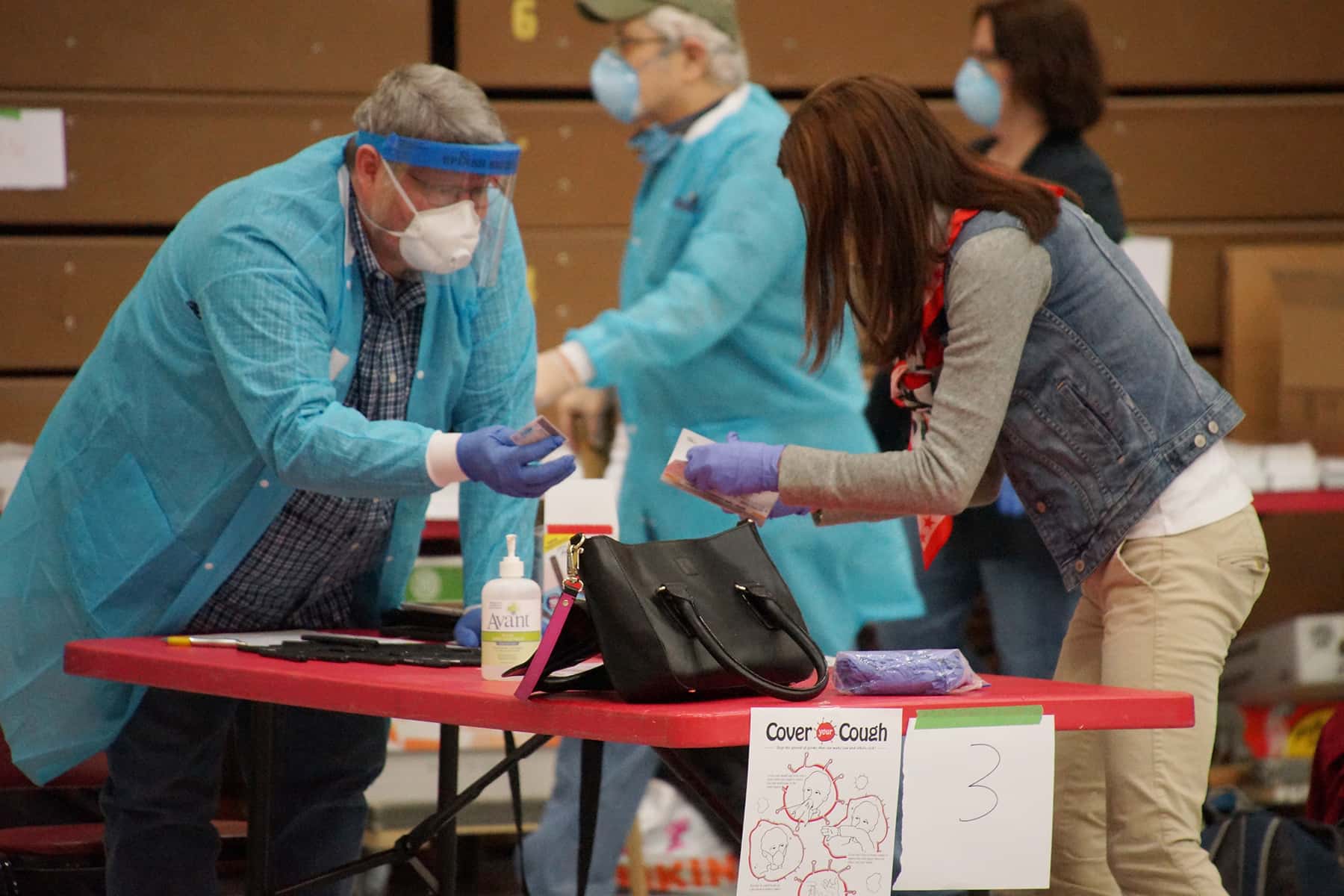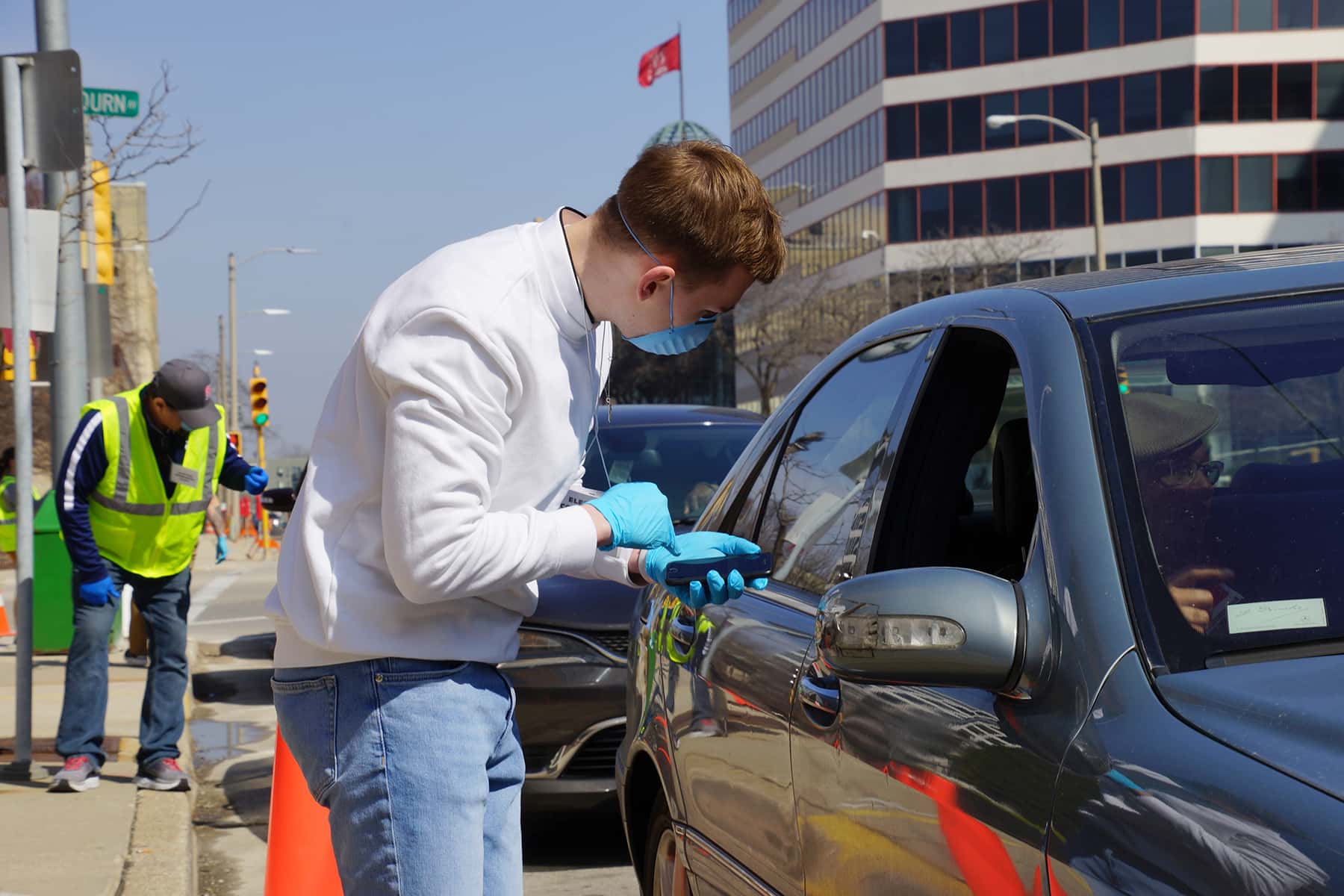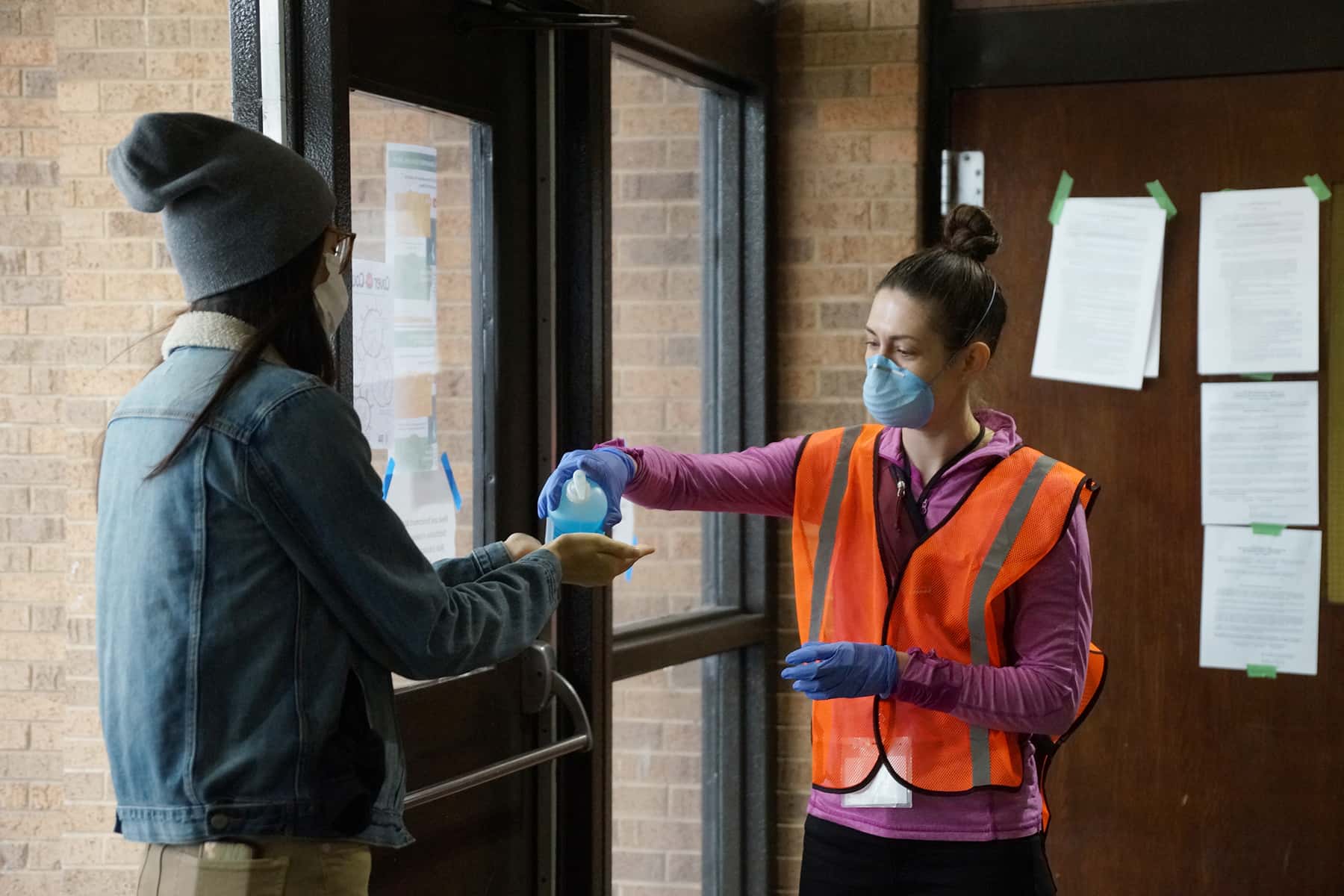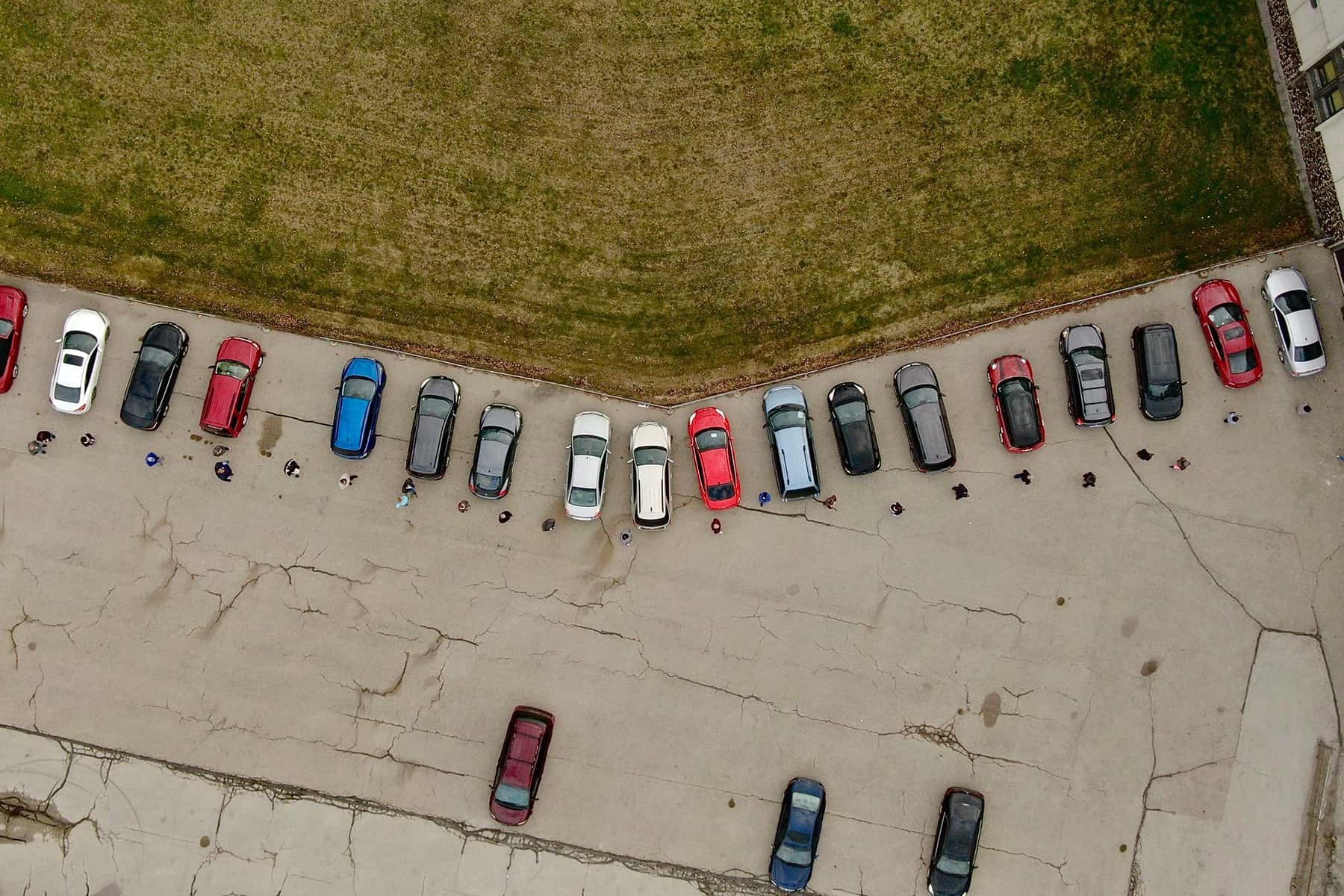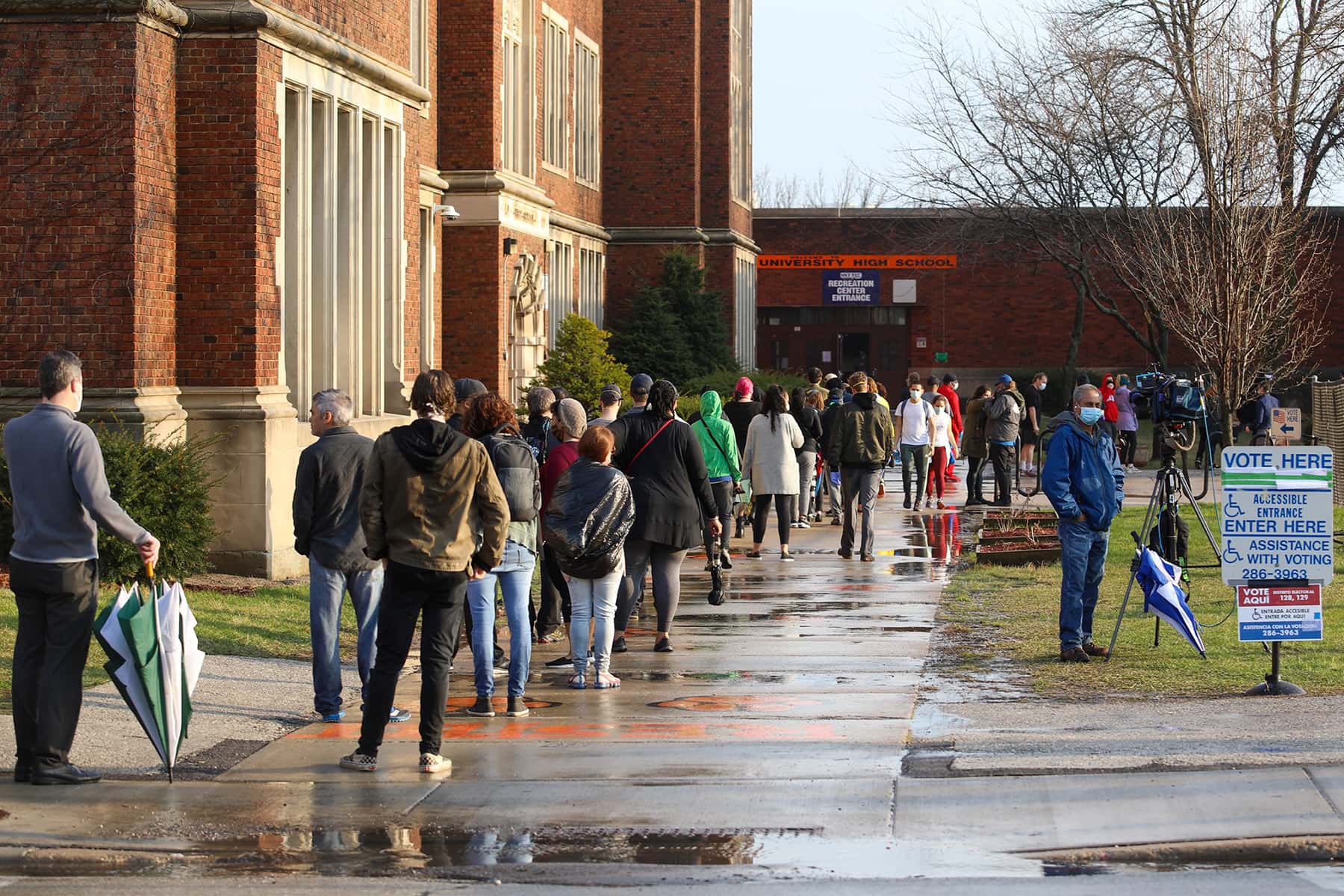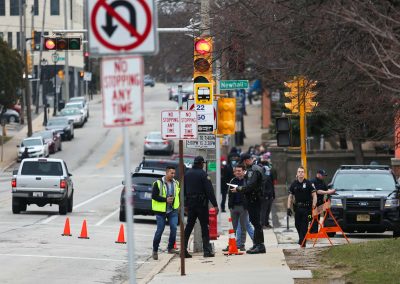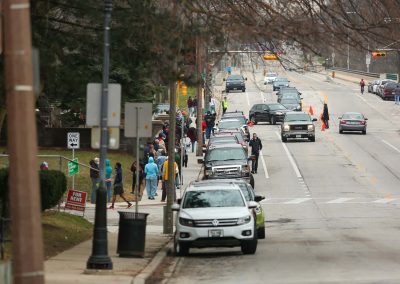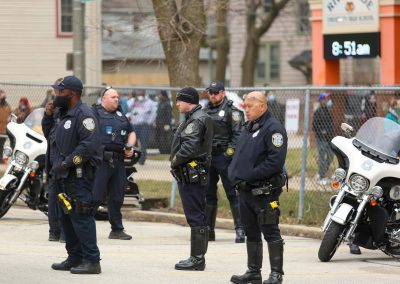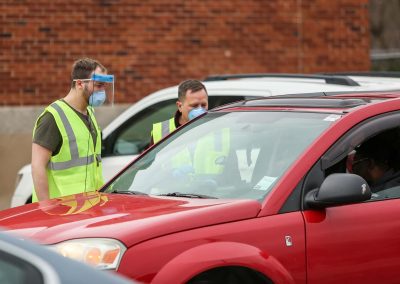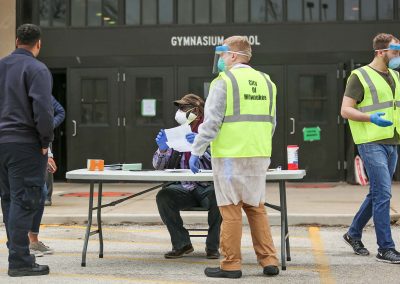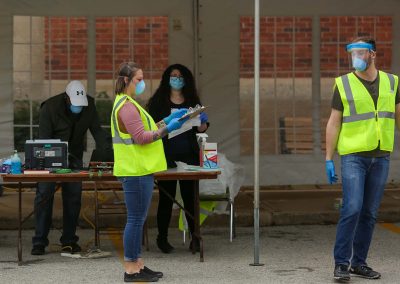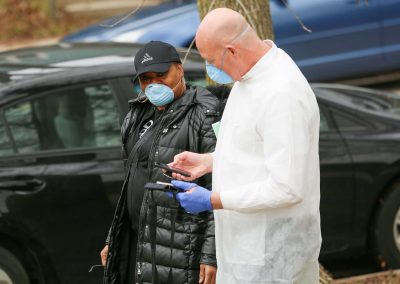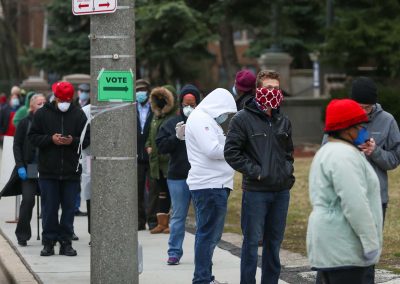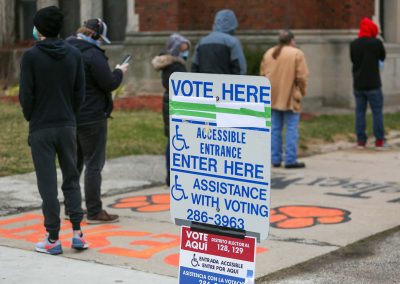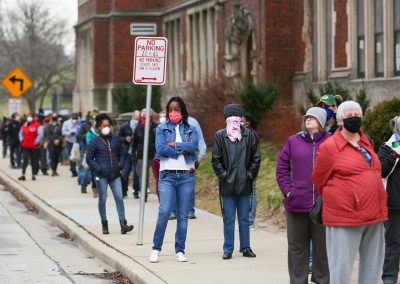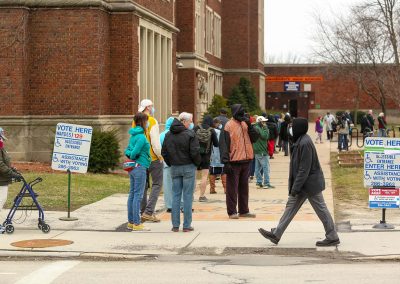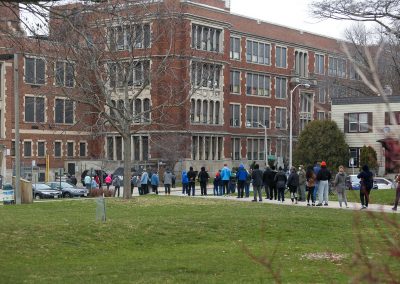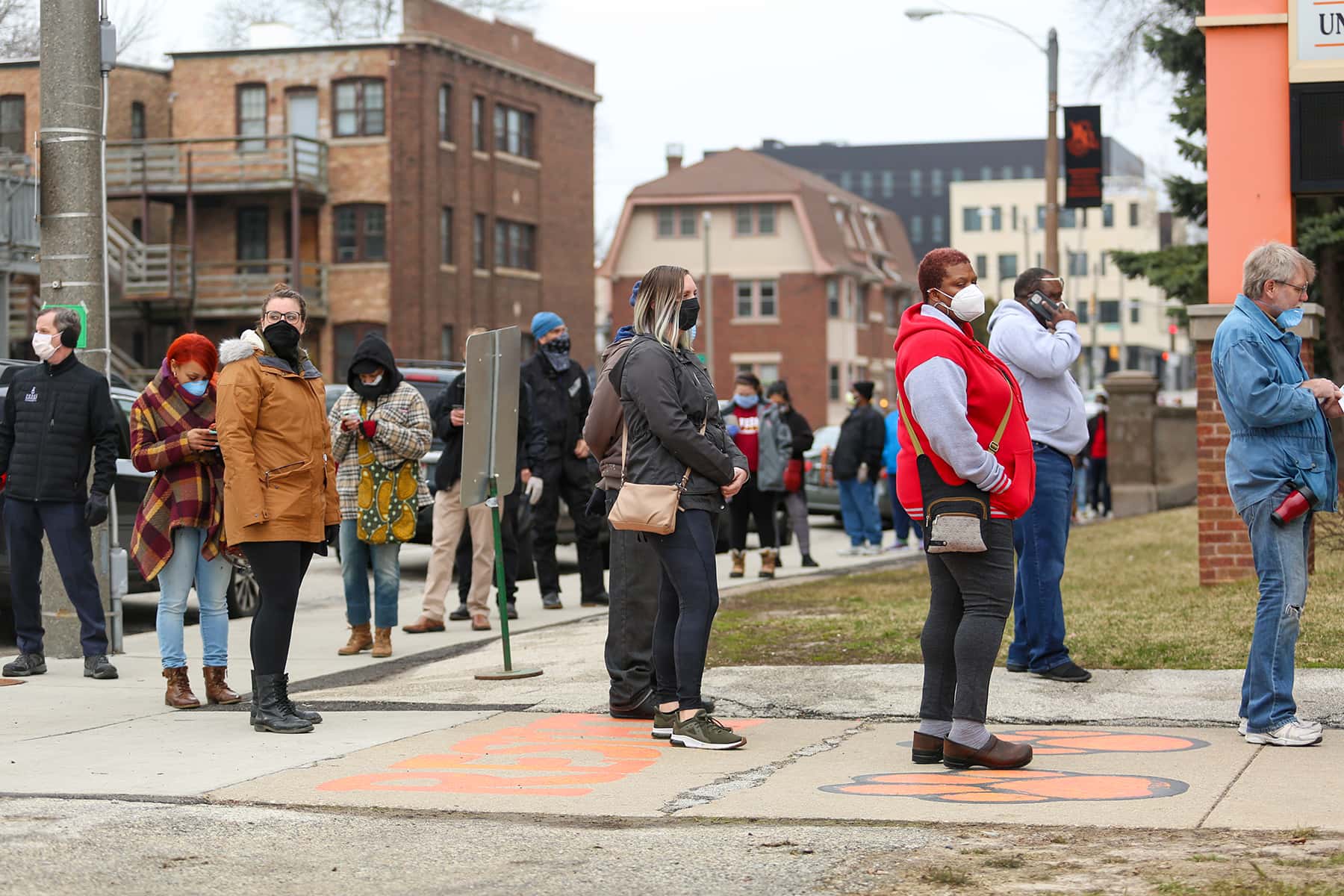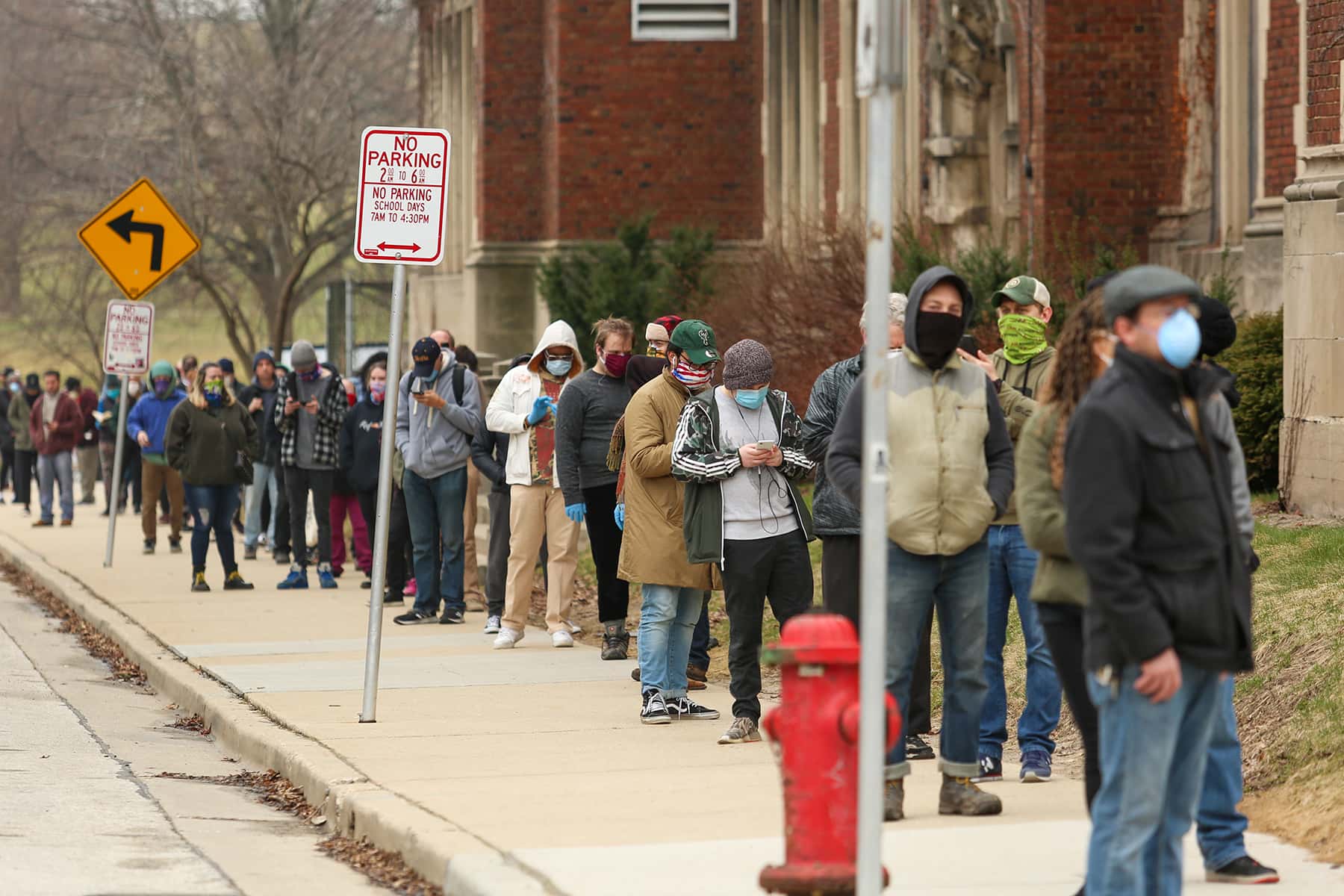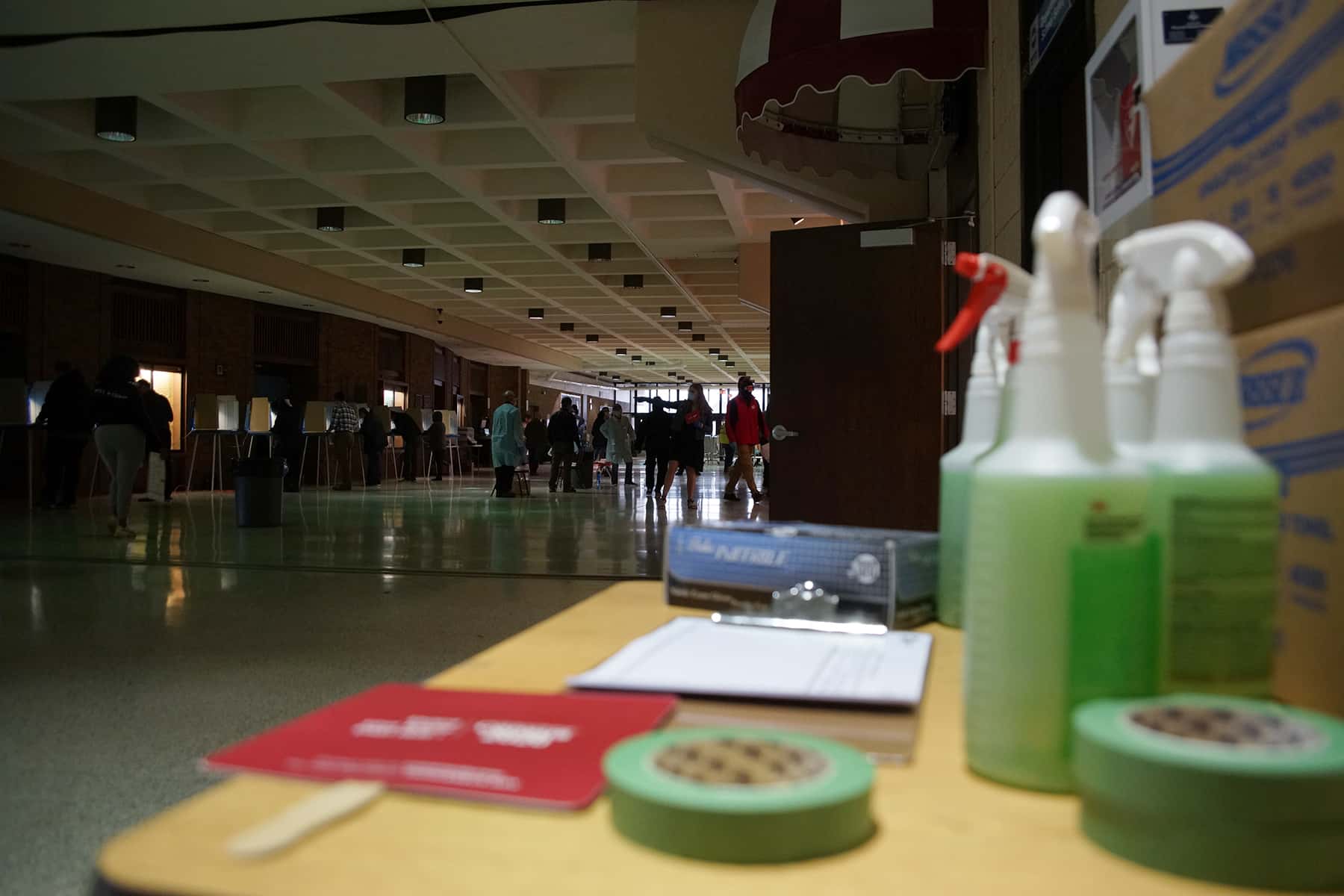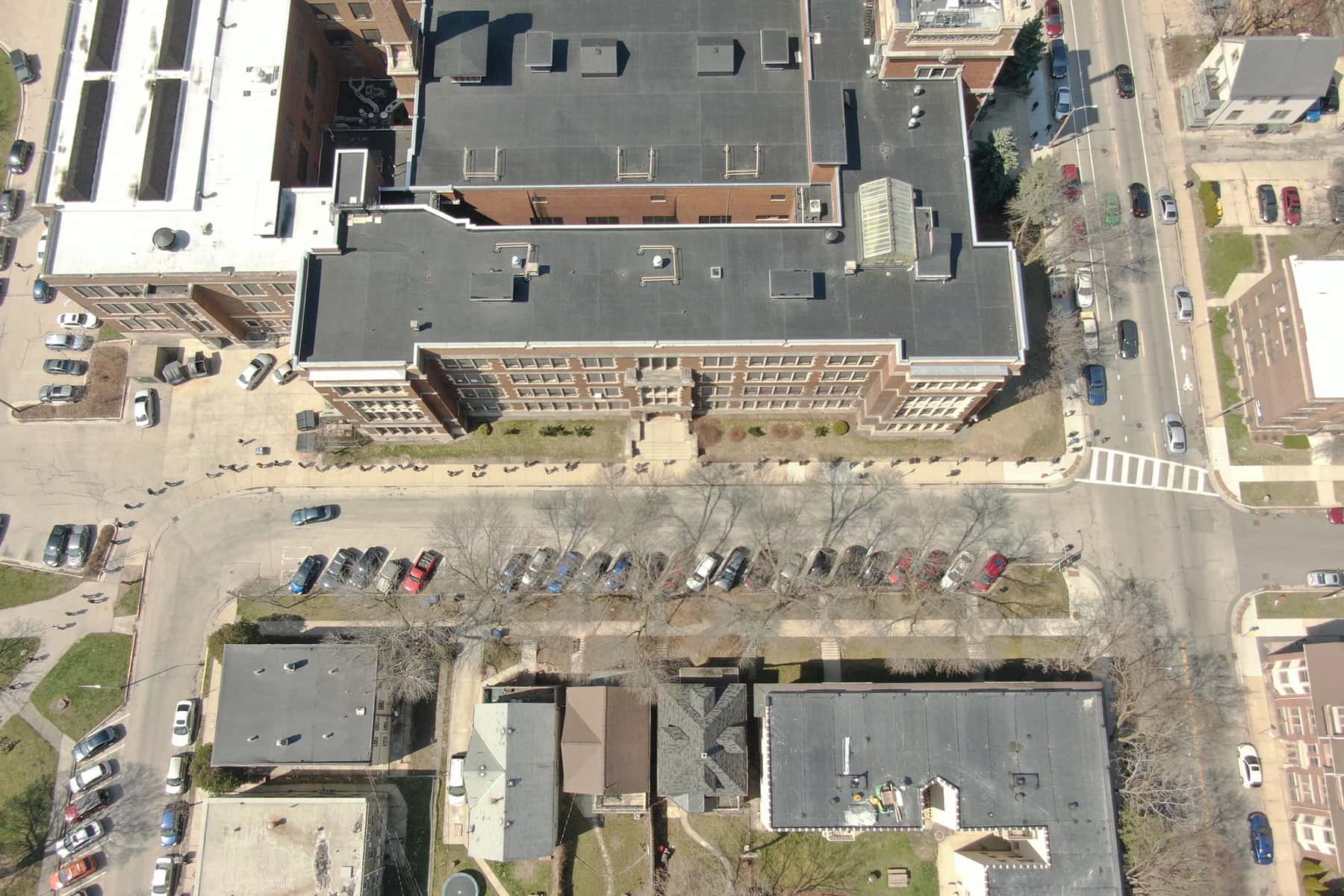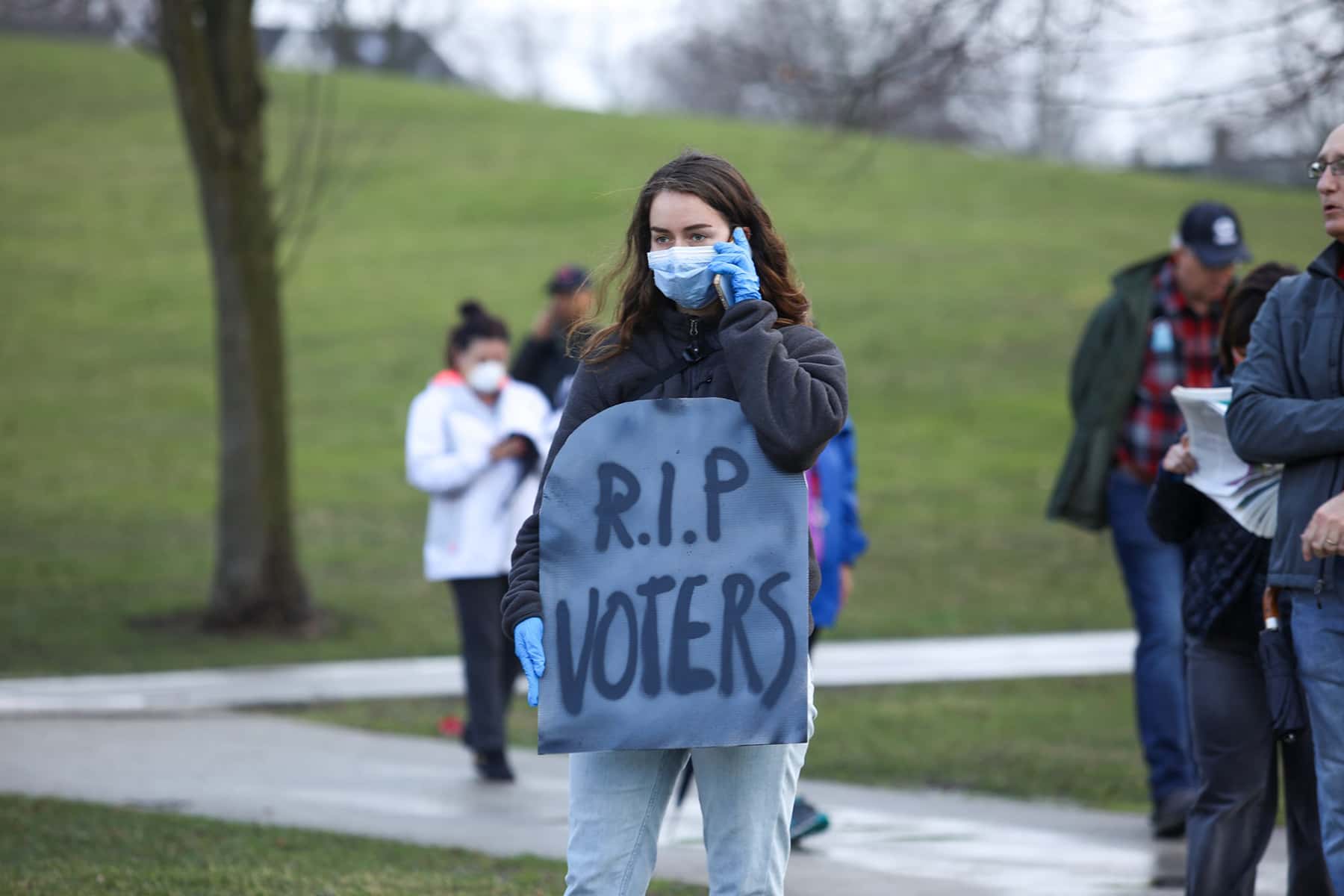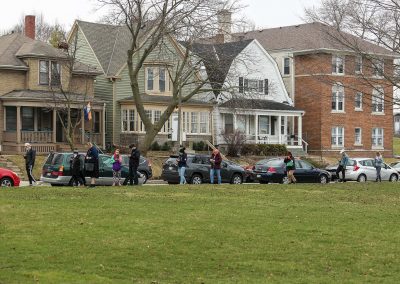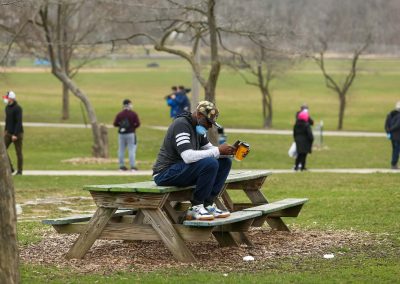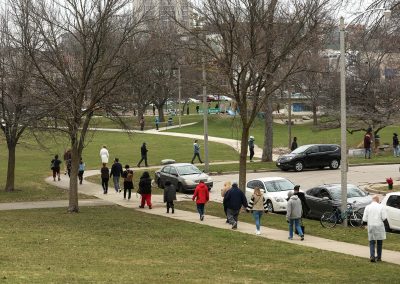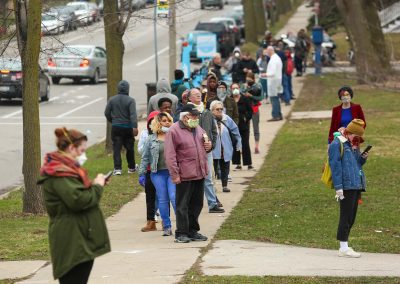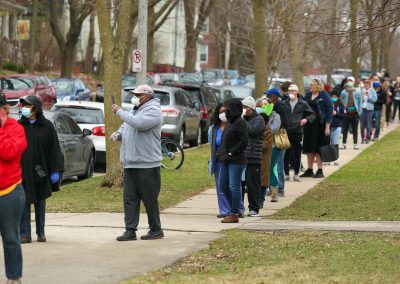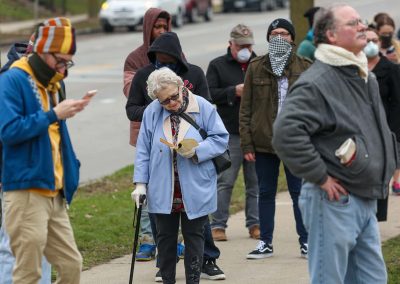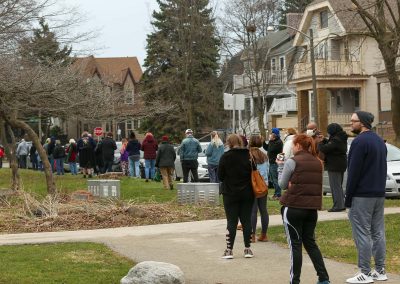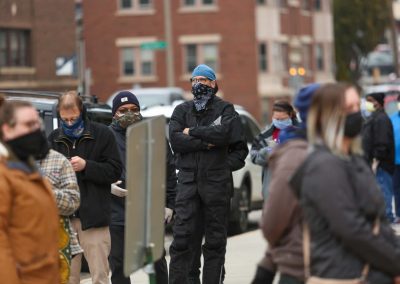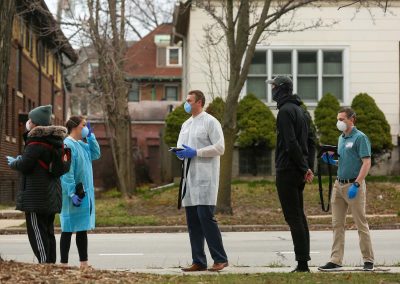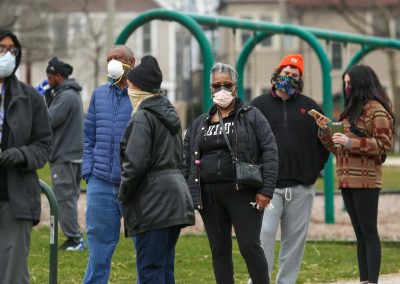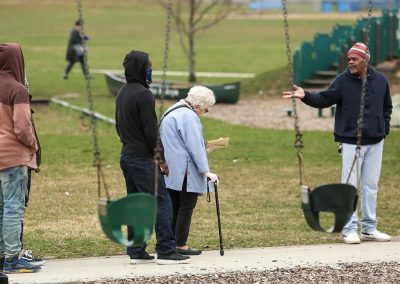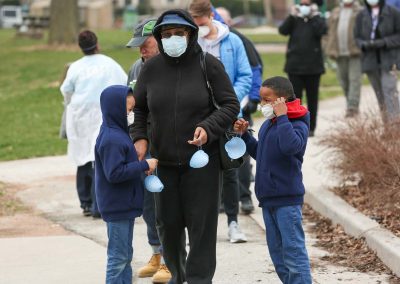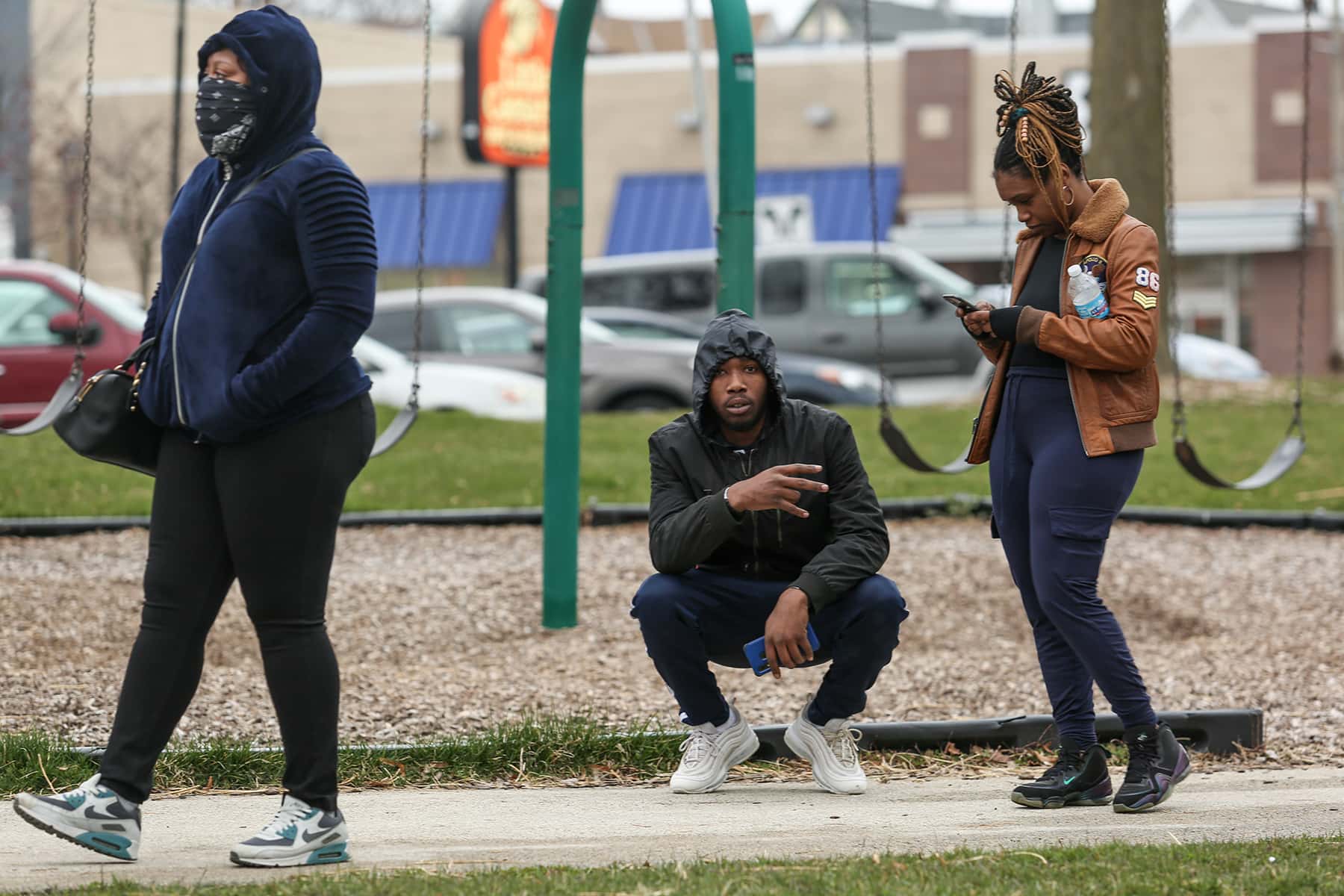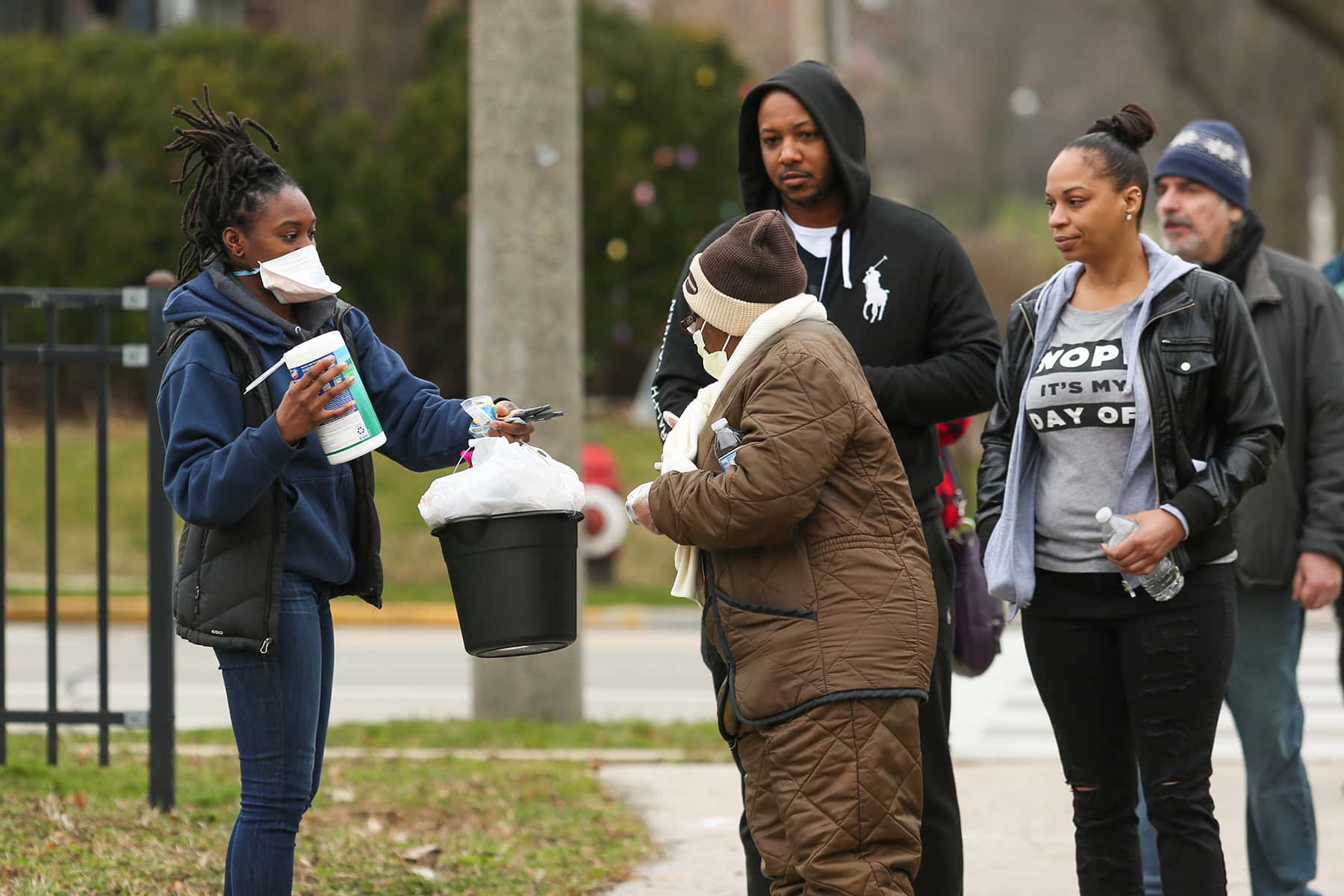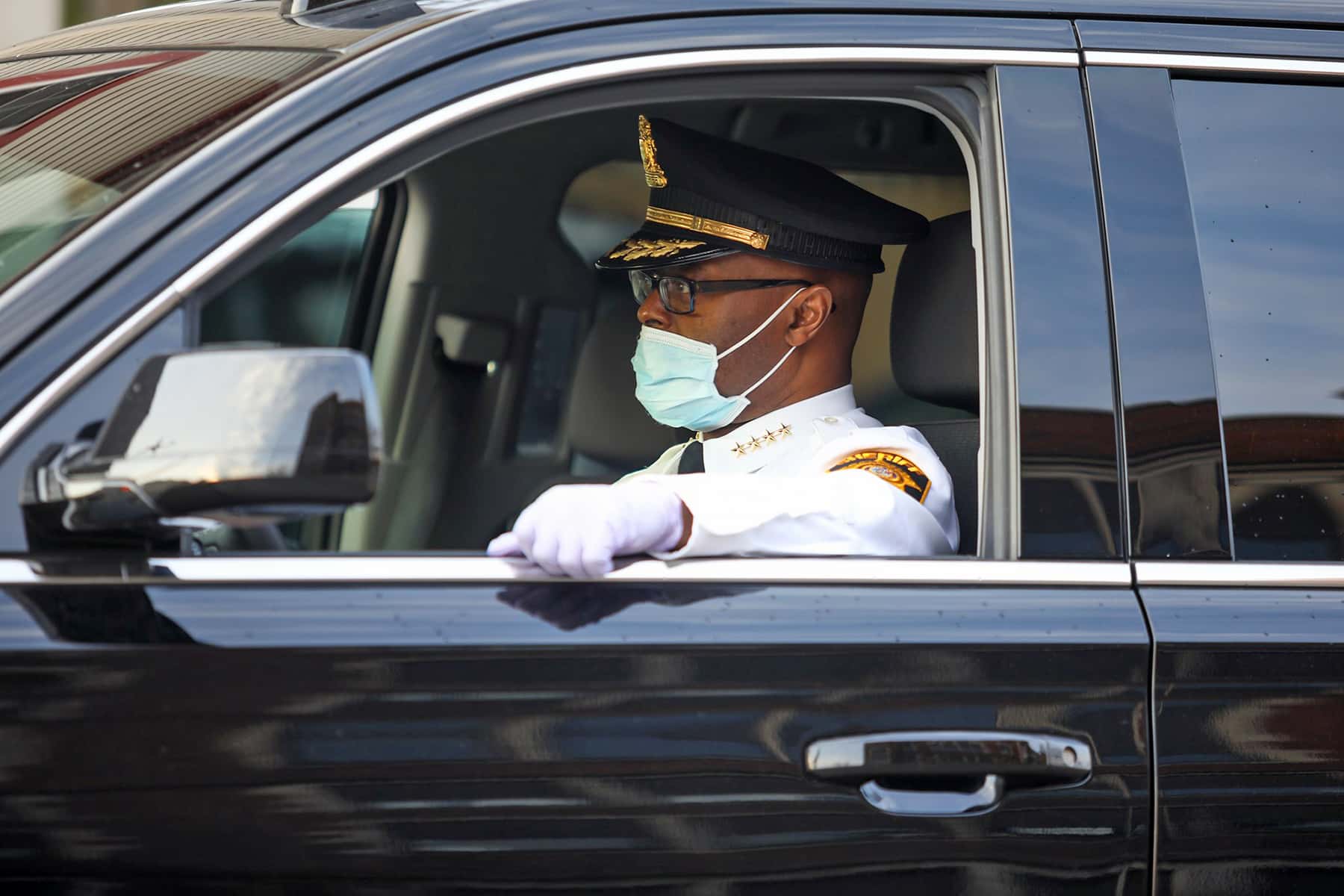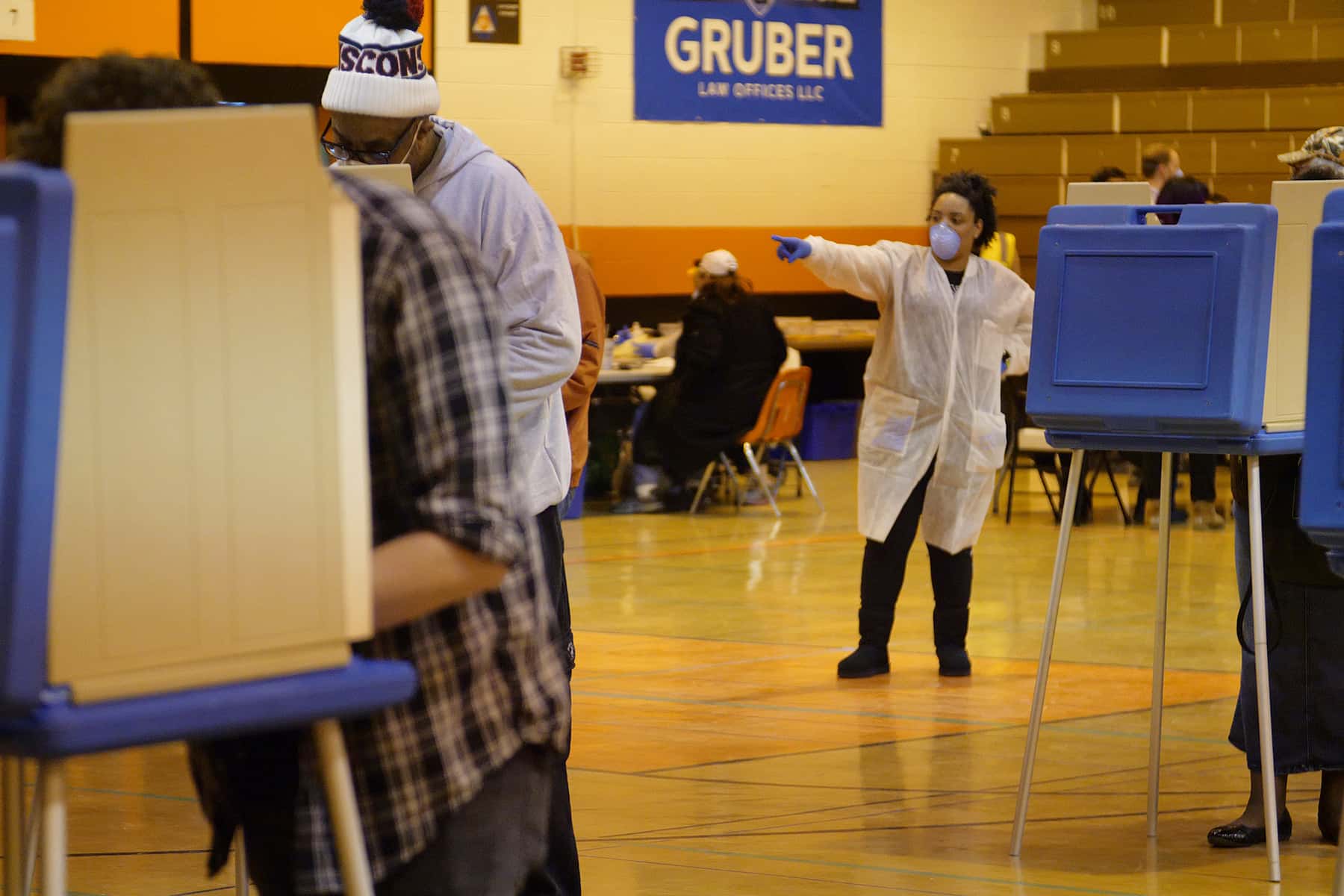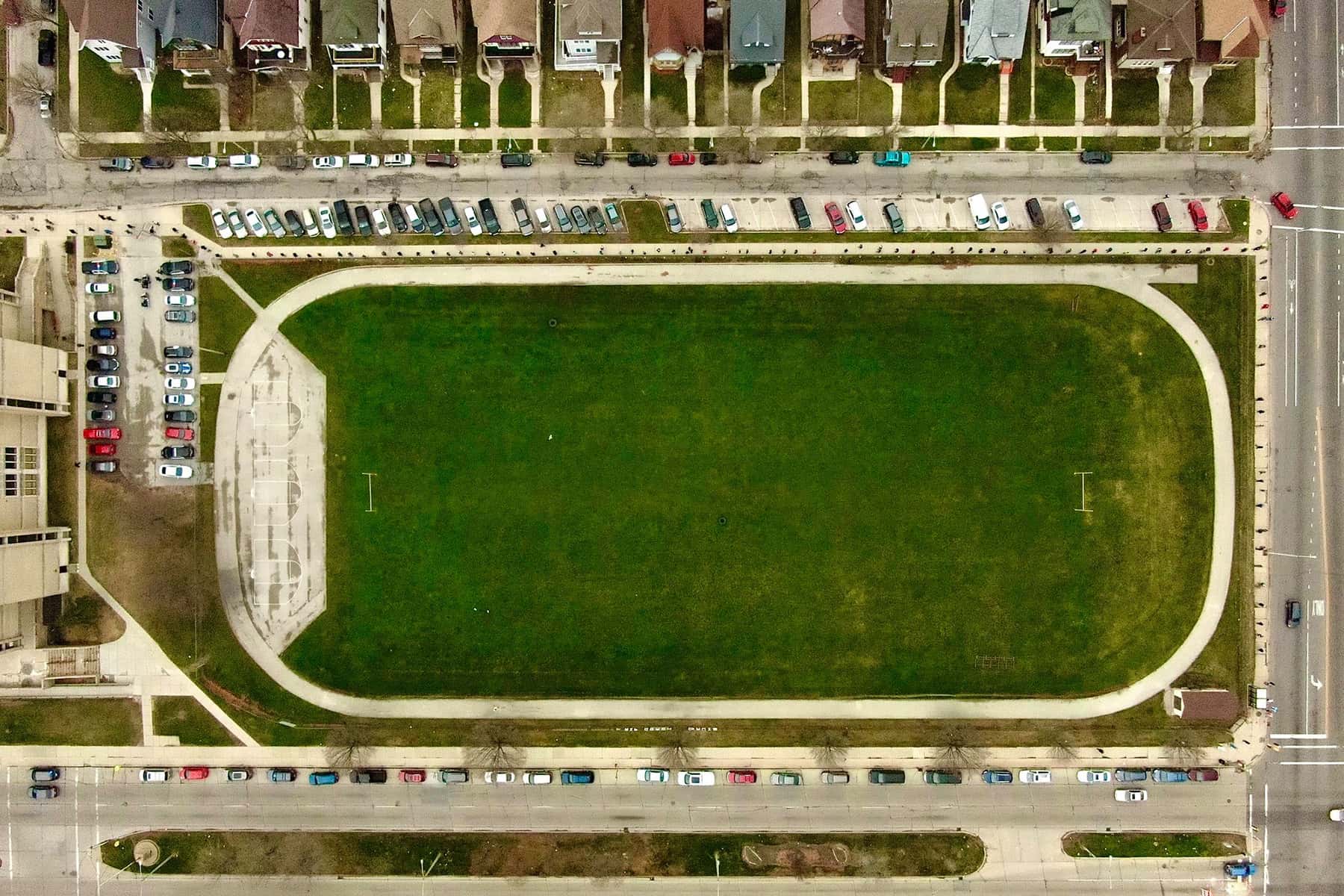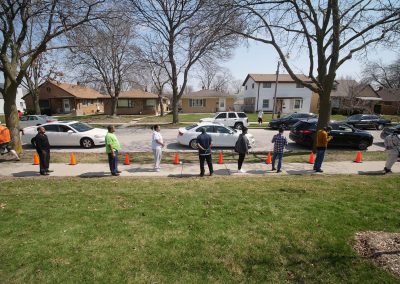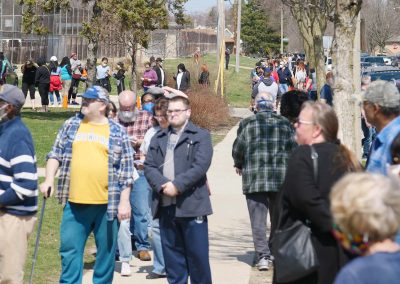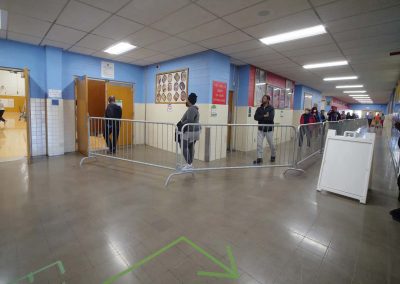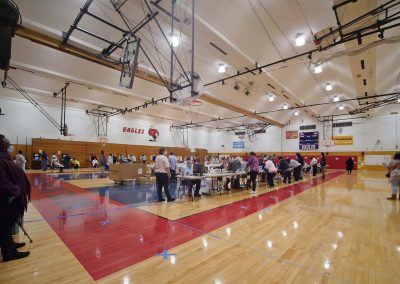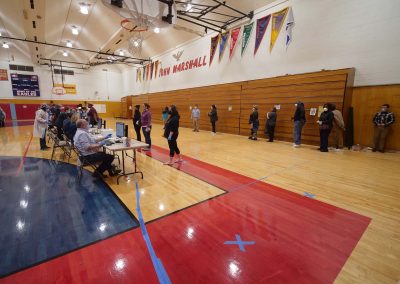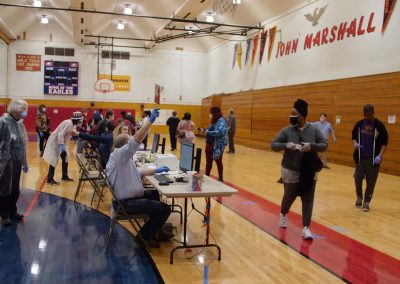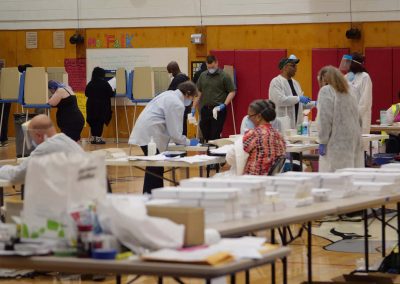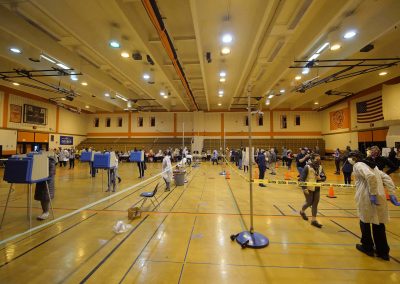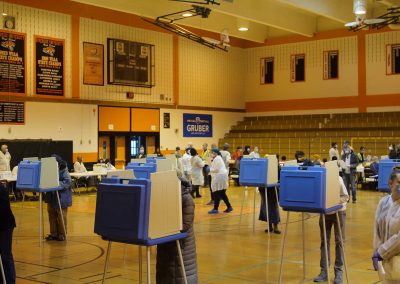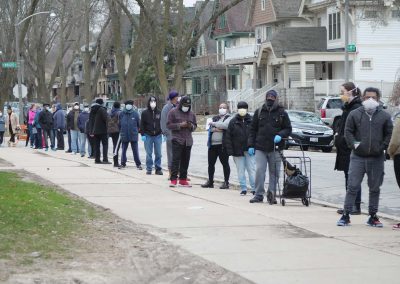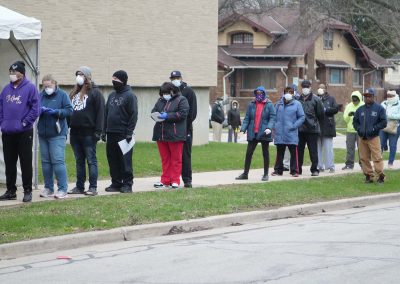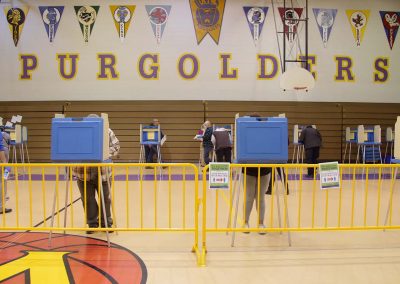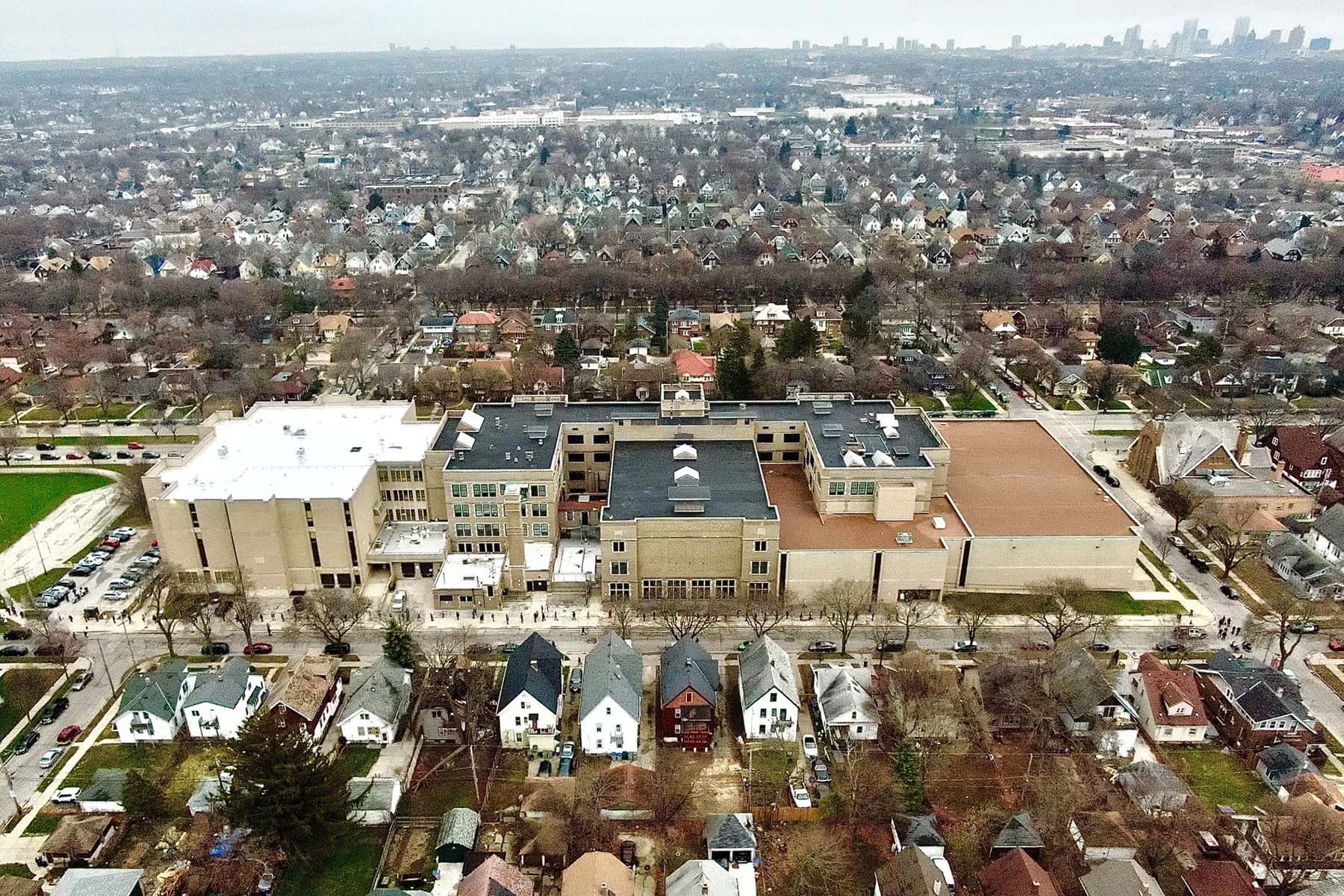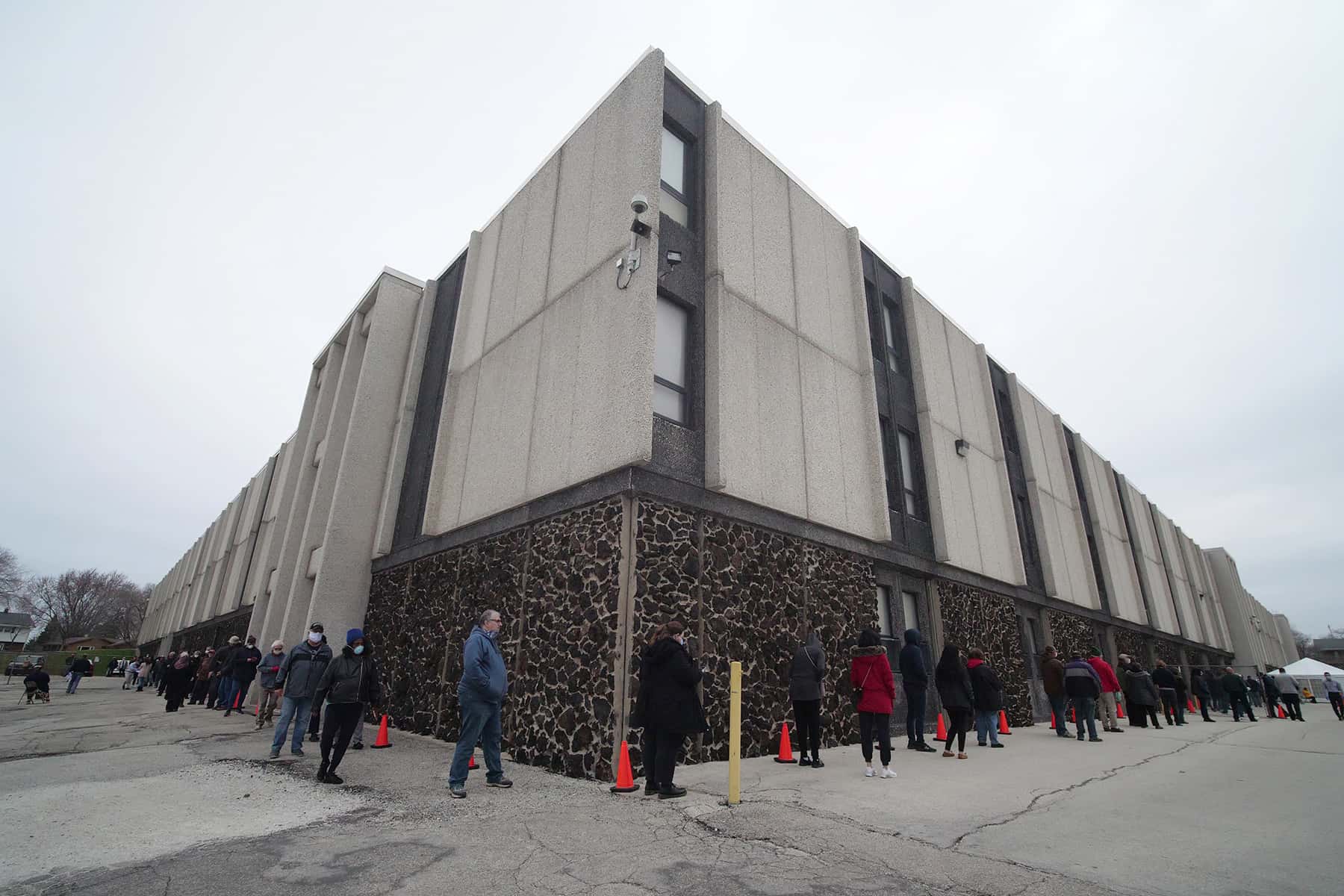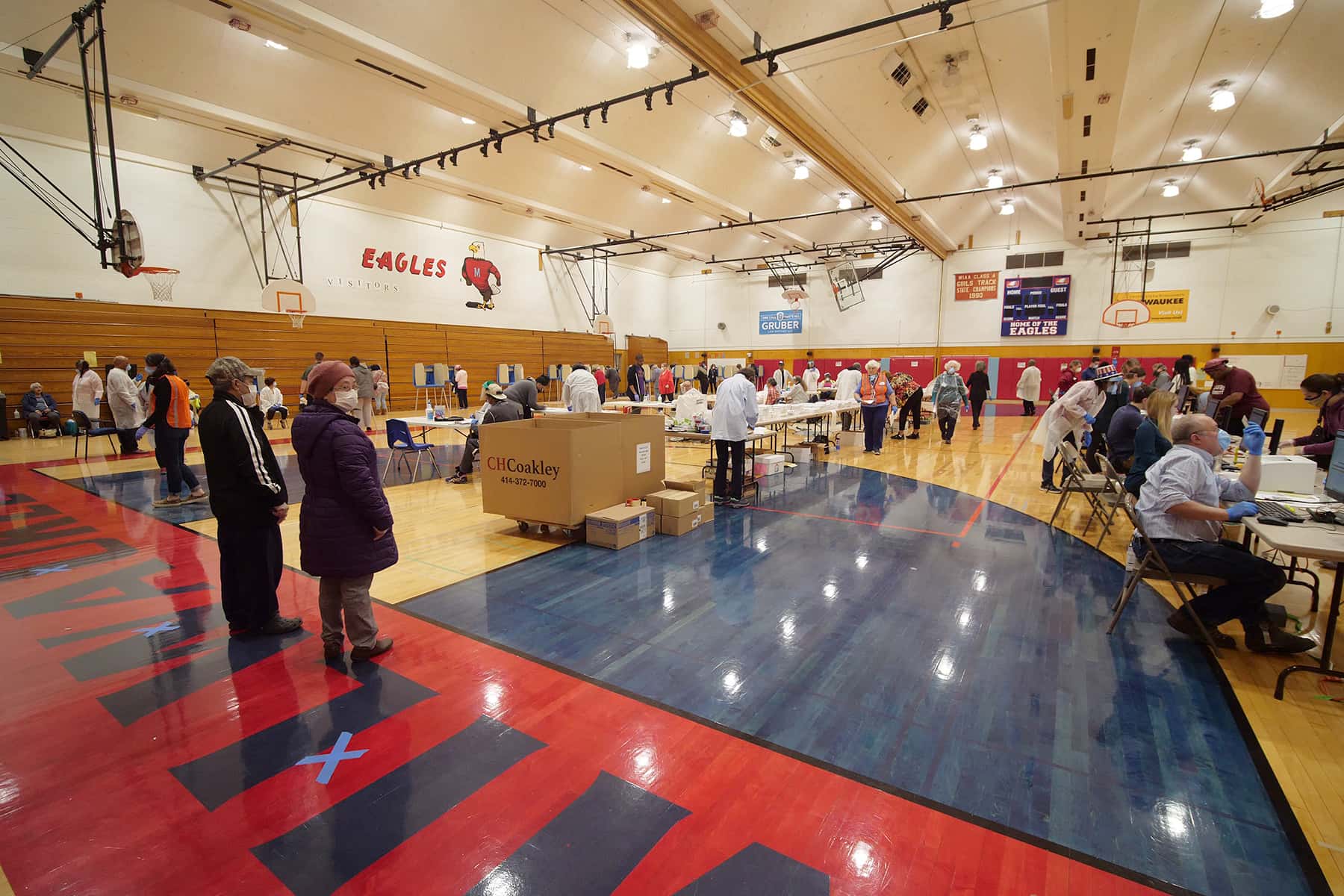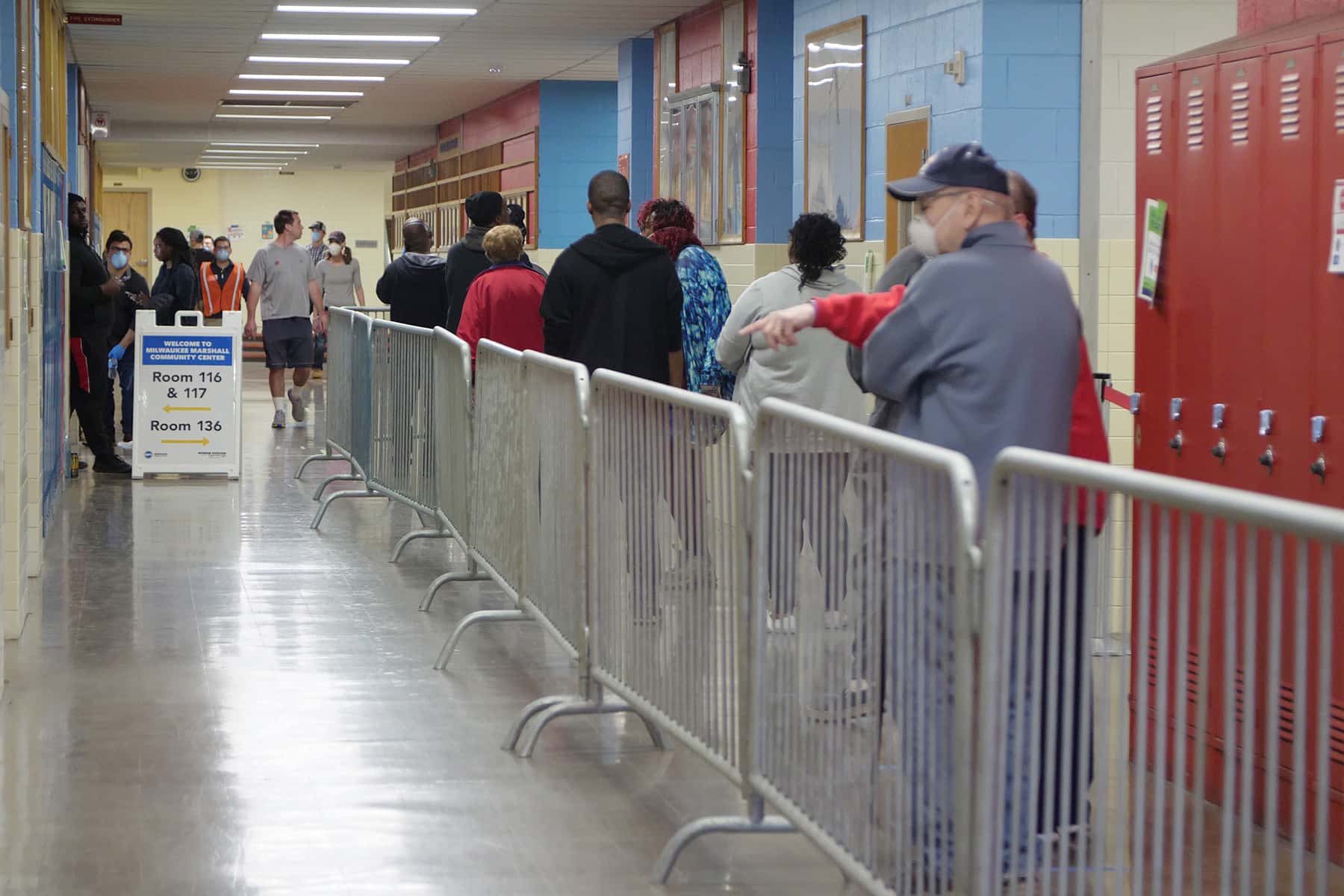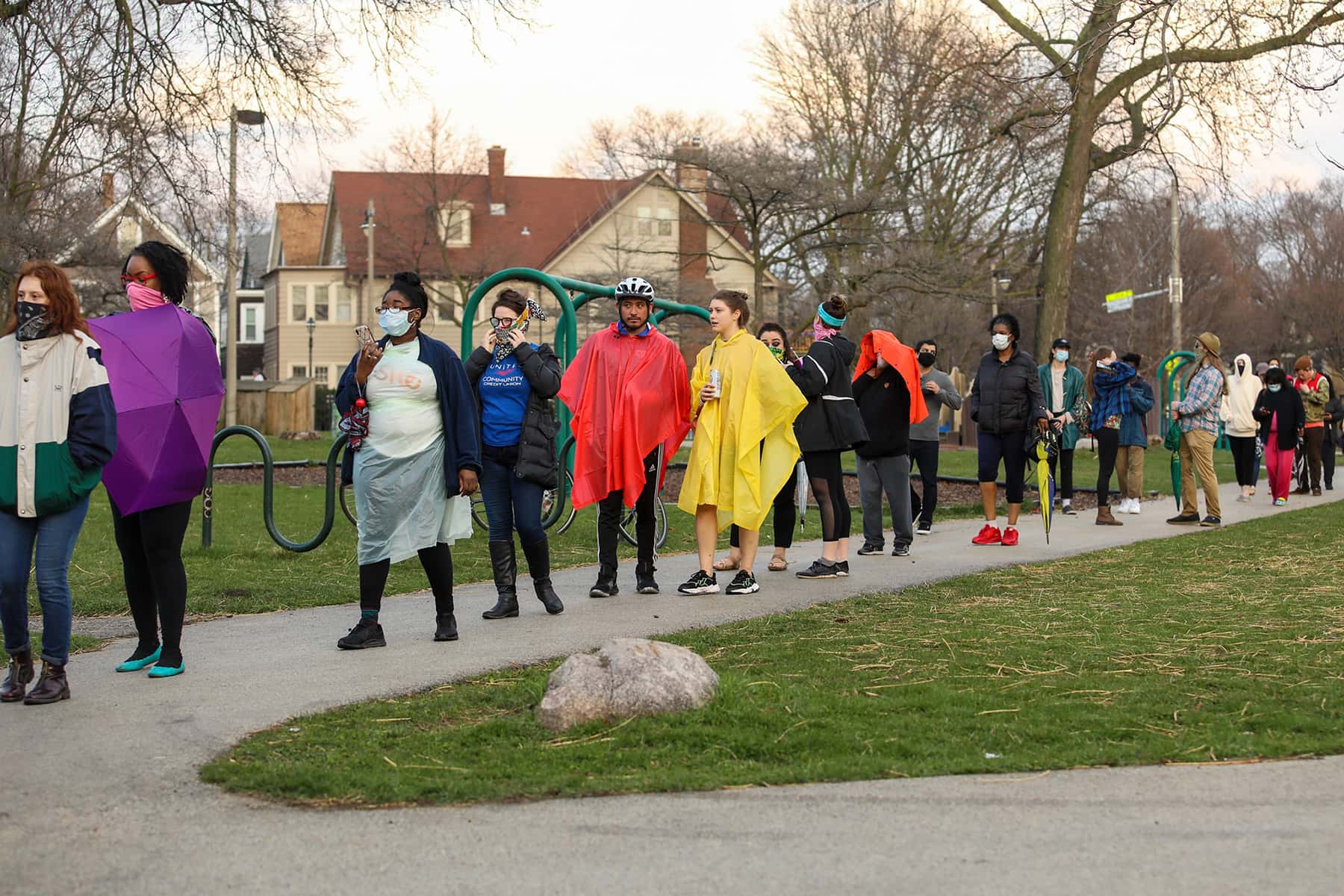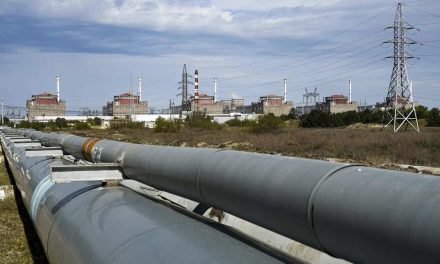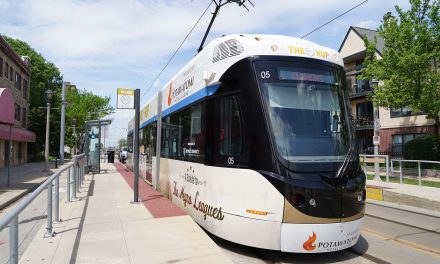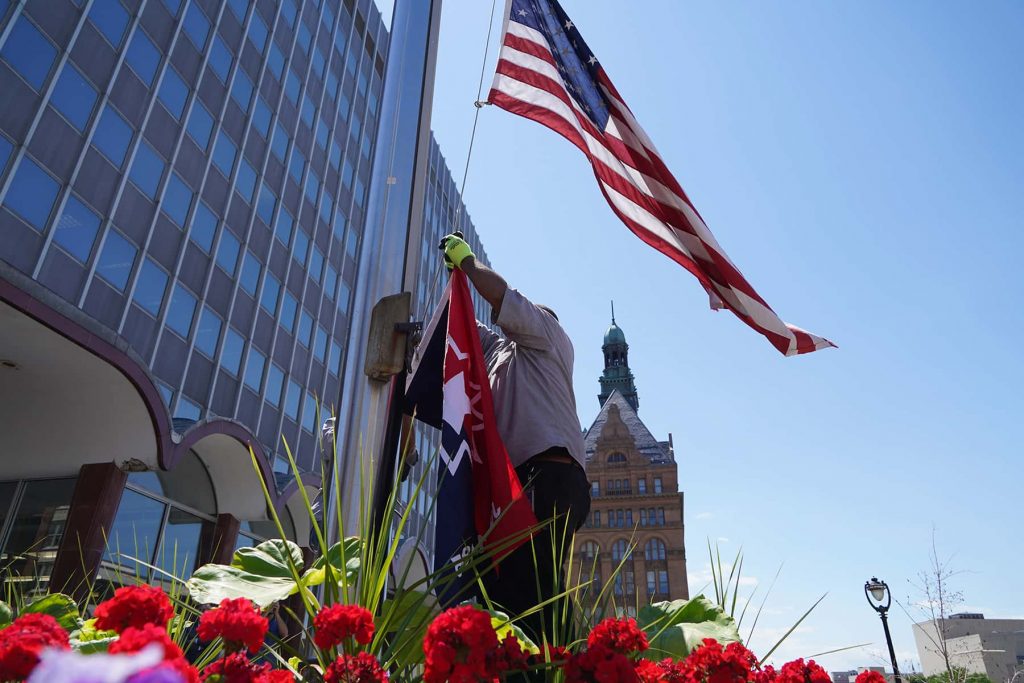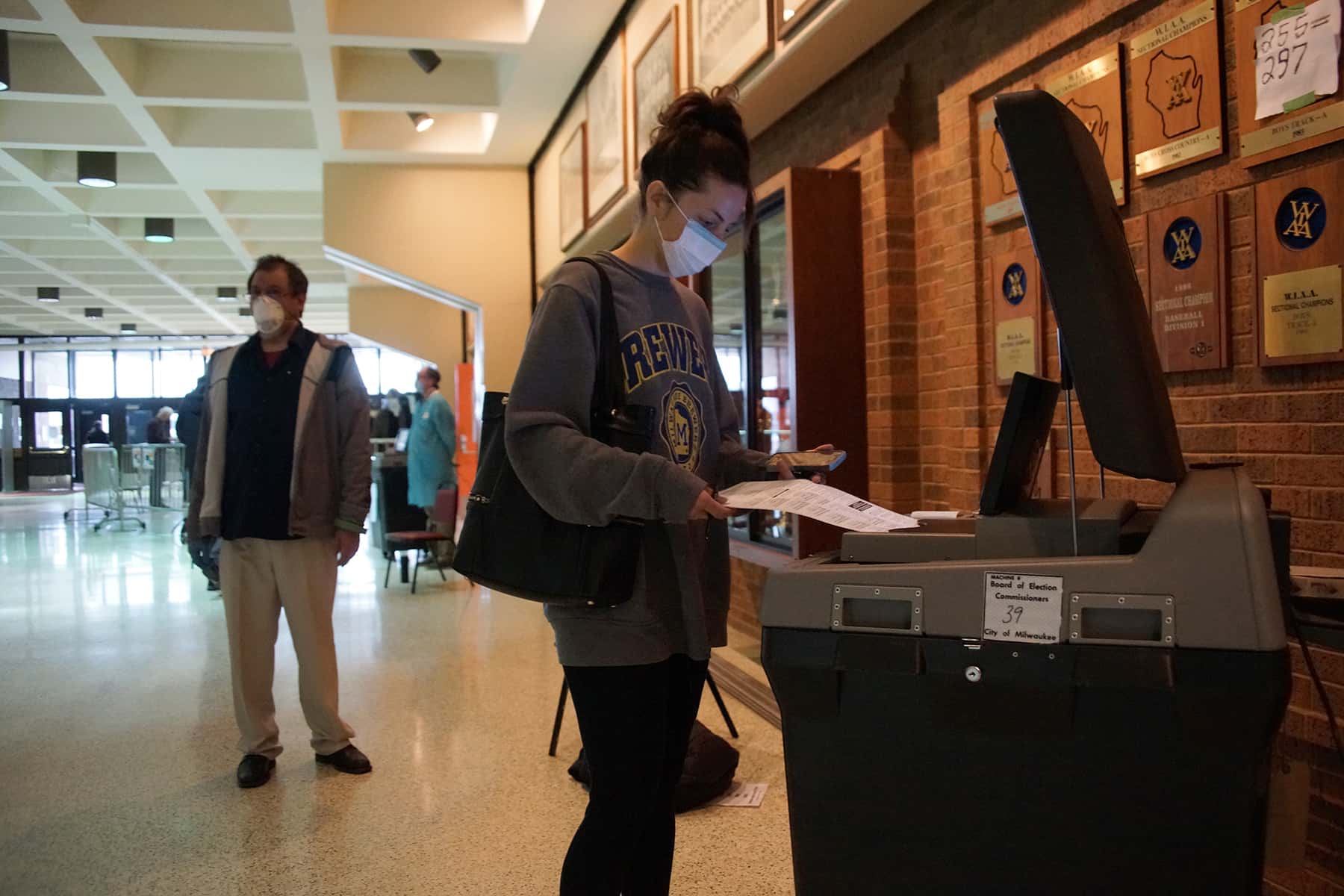
Despite state and federal health recommendations to stay home and avoid mass gatherings in public, thousands of Wisconsin voters waited hours in long lines outside overcrowded polling stations on April 7, to participate in the democratic process during a catastrophic pandemic.
The situation was unlike anything seen before in the state by election officials or voters, as COVID-19 upended the presidential primary process. Wisconsin residents have been ordered to stay at home until April 24 due to the coronavirus, and as of April 6 the state has 2,440 cases and 77 deaths due to the virus. Milwaukee County is the hardest hit with over half of the cases and deaths at 1,256 cases and 40 deaths.
Residents in Milwaukee were forced to choose between exercising their Constitutional right to select their representation in government or the safety of their lives and families, thanks to Republican Legislators in Madison who seized the health emergency to suppress voter participation and disenfranchise minorities.
Some poll workers in Milwaukee wore makeshift hazmat suits, more reminiscent of health care professionals than electoral volunteers. Most voters came prepared with masks, gloves, hand sanitizer, and Clorox wipes. Many said they were overwhelmed with fear.
The April 7 vote came after weeks of legal fighting about if the election should proceed as scheduled, be extended or delayed, or switched from in-person voting to mail-in voting, as the coronavirus ravaged Wisconsin’s population.
Governor Tony Evers attempted to push back the controversial election until June with an emergency order on April 6, but the Republican-controlled state Legislature immediately made an appeal to the state Supreme Court, which ruled 4-2 to strike the order down in just a matter of hours.
Another legal ruling came at about the same from the U.S. Supreme Court, when it approved one of the most brazen acts of voter suppression in modern history. By a vote of 5-4, the court declared the votes of citizens who mailed in their absentee ballots late nullified. The delays were triggered by the coronavirus pandemic and all remedies to correct were rejected.
As Justice Ruth Bader Ginsburg wrote in dissent, the court’s order “will result in massive disenfranchisement.” The decision calls into question the legitimacy of the election itself.
Tuesday’s mess is the culmination of a decade of efforts by state Republicans to make voting harder, redraw legislative boundaries, and dilute the power of voters in the state’s urban centers. The GOP-dominated state legislature has held a majority since 2011, due in part to gerrymandered maps.
In-person turnout at the polls in Milwaukee was expected to be lower than usual, as many residents had opted to vote by mail, and others expressed concerns about the risk of exposing themselves to the coronavirus at crowded polling places.
For all the thousands standing in line, thousands more stayed home, unwilling to risk their health even as Republican officials pushed forward with the election amid a stay-at-home order. But many of the potential voters who remained in their homes complained that the absentee ballots they had requested never showed up.
As Wisconsin’s most populous county, Milwaukee had only 5 polling places opened compared to the usual 180 due to the public health crisis. Election officials reported a shortage of 7,000 election workers throughout the state. The shortage prompted Governor Evers to dispatch more than 2,500 National Guard troops to assist as poll workers.
For a comparison of the depth of voter suppression in the region, the nearby city of New Berlin in Waukesha County is a mostly white, Republican-voting suburb with a population of 39,740. As a minority majority city that votes heavily Democratic, Milwaukee’s population of 595,351 is 39% Black and 15% other people of color. New Berlin had 7 polling places, or 1 polling place for every 7,200 residents. Milwaukee had 5 polling places, or 1 for every 120,000 residents.
The chaos in the battleground state underscored the lengths that the coronavirus outbreak has upended politics. The election complications had a racial component, as well. Milwaukee is home to the state’s largest concentration of black voters, a community that has been hit harder than others during the pandemic. Reduced minority turnout would benefit Republicans in a state and local elections.
With the polls closed, the election results will not be made public until April 13, in compliance with a federal court ruling. The images in this photo essay capture the day’s history from all five polling location in Milwaukee: Riverside High School, Marshall High School, South Division High School, Washington High School, Hamilton High School, and the absentee ballot drop-off at the Frank P. Zeidler Municipal Building.
The extended coverage was possible due to the assistance of Claudio Martinez and Wes Tank with their still and drone photography.
“I will forever remember the the courage and resolve of poll workers and voters who were unfairly thrust into choosing between their health and participating in their democracy. I am honored and inspired every day to serve as Mayor of this remarkable city. Whatever the outcome of this election, I will continue to do all I can to keep every city resident healthy and safe.” – Tom Barrett
© Photo
Lee Matz, Claudio Martinez, and Wes Tank

